-
Posts
18 -
Joined
-
Last visited
Content Type
Forums
Articles
FAQs
Online Manual
Support: Blocks
Support: Games
Bug Tracker
SIGames Manual (beta)
Profiles
Posts posted by Boroboy116
-
-
Stay wider on the centre backs and roam from position on the wingers.
0 -
23 hours ago, mastamash said:
thanks to you for this new jewel ! you are one of the most interesting managers of the moment with jtaylor
Thanks buddy 👍🏽
0 -
https://steamcommunity.com/sharedfiles/filedetails/?id=2363517072
Overview
This tactic takes inspiration from some of the most revolutionary mangers of the modern game. I have taken aspects of their philosophies and principles and moulded them into an image of how I like teams to play,
It’s no surprise that these great coaches and managers have also influenced one another when creating their own philosophies and principles of play. One can trace this lineage back to Rinus Michels who on paper people might discount as a great manager even though he won 13 trophies but this is dwarfed by modern coaches such as Sir Alex Ferguson, Jose Mourinho and Pep Guardiola.
However, to define greatness is complex and there’s no question that Rinus Michels changed the game. He was a firm believer in total football and his Dutch side are arguably the best side not to win a world cup. Rinus, however, was not the creator of total football which can be dated back to Jack Reynalds and the great Hungarian side of the ’50s who played with great fluidity and versatility.
Rinus built on these principles with his philosophy built around space, using versatile players who could interchange positions fluidly combining to create and exploit spaces, the result was breathtaking as his Ajax team overwhelmed opponents.
Seeing football as a contest of versatile players using space in a fluid system, Michels’ could look beyond traditional concepts like defence and attack. Meaning he could pioneer to the like that had never been seen before with his tactical innovations re-defining football.
Perfected by Michels and followed by his apprentice Cruyff, TotalFootball became a synonym of beautiful football. The style was in direct contrast to that of catenaccio that focused on man-marking.
The concepts of TotalFootball are seen in the philosophies of Guardiola and Sacchi, whose Barcelona and AC Milan sides are the only teams to ever come close to matching Ajax’s blend of elegant, technically proficient, and winning football.
The formation pays homage to the total footballing dutch side of the 70’s being very fluid and positive on the ball. The shape is a 4-1-4-1-0 with the Trequartista playing deeper similar to the false 9 system used to great effect by Pep Guardiola. This also has the benefit of condensing the lines with the whole team being close together like Sacchi’s great Milan side.
With the ball
The team looks to stretch the pitch wide making it as big as possible creating more time and space for players to play in. The focus is to target these wider areas creating overloads and forcing the opponent to move more players across, opening the quick switch of play to exploit the spaces in the centre and on the far side of the pitch. This is similar to how Bielsa and Gasperini set up their teams to great effect.

The system prioritises positional play rather than out and out possession, to create the one-touch football desired much shorter passing is used in conjunction with a much higher tempo, meaning players will be positive on the ball looking to move it quickly promoting pass and move football.


Implementing this style requires some key roles, the Regista is the first key player for the team. He is the team's primary creator always looking to get on the ball and driving the team forward from deep. The second key role is the Trequartista who is a mirror to that of the Regista, he will link play from higher up the pitch often dropping the ball off before arriving late into the box. The BBM’s form the diamond in the centre of the pitch which was at the heart of Cruyff's philosophy.


Transitions
When the ball is lost, the team will look to win it back as quickly as possible; therefore, counter-press is selected. When the ball is won back the first thought is to counter to take advantage of space from the lack of organisation from the opponent's defence.
The goalkeeper will look to play the ball into the Regista with short kicks, this forms a diamond along with the centrebacks. This allows the team to play around the opponent's press with players staggering the lines in midfield and wingbacks pushing high and wide.


Without the ball

The team is all responsible for defending; a zonal system is used meaning once a player leaves a zone he is picked up by another player. This type of defending is useful as players each take responsibility for a certain zone rather than a direct opponent like a man-marking system.

Total football concepts include making the pitch as small as possible for the opposition, this is done through the defence pushing up in a high line and using the offside trap amplifies the reduced space. To supplement the high defensive line a higher line of engagement is used to press and limit the time and space the opponent players have. Increasing the risk and chances of turnovers occurring. The more urgent press is used rather than an extreme press as this would pull players out of position opening up space and gaps for the opponent to play through.

The team remains compact as per the principle of Sacchi who believed the lines should be no more than 25 metres apart. Making it extremely difficult for teams to play through his teams.

The Results
The results were fantastic with some beautiful football on display. Goals were scored aplenty but the most impressive stat was only 9 goals conceded!Regista

Trequartista






 2
2 -
Overview
One thing that separates Brendon Rodgers from many other British managers is his tactical flexibility. Unafraid to use different systems of play from the 4-2-3-1 at Swansea which drew comparisons to Barcelona, to the diamond that had his Liverpool team running over teams in attack akin to Klopp’s Dortmund. However, his principles of play are clear and have a been put to the test across various leagues like the championship, premier league and the SPL with Celtic.
It’s all about the ball. Dominating it, looking to win it back quickly, owning it, this is especially true of his Swansea and Celtic sides with Liverpool being the outlier and Leicester being something of a hybrid between the two styles capable of playing a possession style or sitting deep and hitting teams with fast counters as evident against City and Leeds this season.
“I like to control the games. I like to be responsible for our own destiny. If you are better than your opponent with the ball you have a 79 per cent chance of winning the game for me it is quite logical. It doesn’t matter how big or small you are if you don’t have the ball you can’t score.” (Rodgers 2012)
Rodgers outlined his vision for Swansea from the get-go incorporating the whole club from the first team right through to the academy. His aim was ambitious he wanted Swansea to be an attacking and attractive team to watch, whilst also establishing them as a Premier League club using players brought through the club’s academy.
To achieve his vision Rodgers outlined a number of principles to create a philosophy and club culture based around possession-based football. He believed the perfect style of play revolved around the circulation of the ball. To do this his team had to have good positional play, with players moving to create plenty of passing lines through the formation of triangles all over the pitch allowing them to dictate the play.
As with all of Rodgers teams, the transitions were hugely important Swansea were no different and they pressed high, used cover shadows and defended in zones across the pitch. The aim was to make the pitch as big as possible when in possession and as small as possible without the ball.

Swansea arrived in the top flight with a clear philosophy from which they had no intention of deviating. Dominating games through possession and winning admirers for their bold, proactive style of play. Swansea survived comfortably, achieving their pre-season goal finishing 11th and 11 points clear of the drop zone. Funnily enough, they ended 2011/12 third in the possession table, with only Arsenal and Manchester City averaging a higher share of the ball over 38 games.
Tactic
As stated above the shape Rodgers used was primarily the 4-2-3-1 to enable him to get the best out of Gylfi Sigurdsson. Britton would dictate from deep whilst Allen would fulfil more of the Xavi role hence his nickname the Welsh Xavi.

Rodgers talks about four phases that underpin Swansea's approach when they have the ball. There is the building and constructing from behind, the preparation through midfield, the creativity to arrive in the areas and then the taking of the goals..
As with Barcelona Swansea built from the back, their centre backs were comfortable receiving the ball before distributing it to a midfielder usually Leon Britton. He would come deeper to form the triangle with the centrebacks outlined in Rodgers philosophy.
Swansea make the pitch as big as possible by players coming deeper such as Britton, they also stretch the pitch wid with their fullbacks hugging the touchline, this combined with their triangular formations makes it easy to keep the ball whilst playing through the gaps left by the opponents who need to cover a larger area.

An area in which did differ a lot to that of Barcelona is that they played with an out and out striker in Danny Graham rather than the false 9 of Messi, in this aspect, you can see the combination of two influences on Rodgers that of the Spanish and Barcelona sides full of small technical players which he admired. The other is the physical and focal point that is able to occupy defenders of Mourinho who he worked under at Chelsea blending these two styles together to create side able to play beautiful football but also put the ball in the net.

One criticism thrown at Swansea is that they often keep the ball in their own half or in areas where they are not hurting the opposition. Rodgers pointed out that, while the primary reason for possession will always be to create and exploit space, the simple fact is that, while Swansea have the ball, the opposition are unable to score.
He also said that by keeping the ball for long periods his team are able to recover. The only time we rest is when we have the ball, "When we haven't got the ball is the moment for intense pressure to get the ball back. But you can't go for 90 minutes, so in order to recuperate and conserve energy, we'll do that sometimes by building our way through the game — our tiki-taka football, our small lending games to keep the ball.
Swansea likes to press high and use a high line to make the pitch smaller, once they win the ball back if they can counter quickly they will do so otherwise they will set about building patiently again.

Swansea do counter-press but it's not as aggressive as the Dortmund press under Klopp, instead, they use more cover shadows to prevent the opposition from playing into open receivers.

Swansea like Barcelona defended zonally, they split the pitch into equal zones with each player responsible for their own zones. The aim was to suffocate the opposition whilst remaining an organised and structured defensive shape, rather than the chaotic nature of man-marking and intense pressing as we see with Bielsa's Leeds. Rarely would you see Swansea players going to ground in the challenge instead they would look to make interceptions rather than outright tackles to win the ball back.

Results





 4
4 -
Stay wider on centre backs and roam and move into channels for the strikers.
No OI’s
0 -
Antonio Conte is often referred to as the 'Godfather' during his managerial career. Conte is highly demanding of his players with his teams being highly efficient and built on unity and hard work. His teams are usually greater than the sum of their parts and any player who doesn't buy into this approach is shown the door.
As a player, Conte spent the bulk of his career playing for Juventus, he was a key part to the success of the club winning 5 Scudettos, a Coppa Italia and the Champions League. He also represented the national team on 20 occasions in a period which saw Italy finish runner up in the 1994 World cup and Euro 2000.
After retiring, Conte went into coaching first being an assistant manager before becoming a manager in his own right. He achieved promotion with Arezzo and Sienna in Seria B the latter earning him his first big role as Juventus came calling in May 2011. He would help rebuild the club back to past glory after their demotion due to the match-fixing scandal. In his first season, he guided the Old Lady to the summit and oversaw a period of domestic dominance which he now seeks to break with Inter.
After winning three Scudettos with Juventus, the Godfather took the national job and led Italy to the semi-finals of Euro 2016. On its conclusion, he moved to England returning to club management with Chelsea. In the early part of the season, Conte used a 4-3-3 system however after 3-0 defeat to Arsenal he reverted back to a shape more familiar to him the 3-4-3 with two holding midfielders. Chelsea then romped to the Premier League title before adding the FA cup a year later.
Inter Milan
Inter are one of the powerhouses of Italian football and one of the biggest clubs in Europe, however, since winning the treble in 2010 under Mourinho they have underachieved massively and regressed dramatically. With the appointment of Antonio Conte, last season they enjoyed a renascence pushing Juventus all the way eventually finishing 2nd a point behind the Old Lady. This was their highest finish for almost a decade in which often they weren't even battling for a top 4 finish.
Conte is often referred to as a pragmatic and defensive coach in a similar way to Jose Mourinho this label, however, is false. Conte almost stumbled on to his philosophy of playing three at the back after inheriting Bonucci, Chiellini and Barzagli he quickly realised he couldn't leave one of them out and his direct aggressive style was born.
Conte has always adapted his positional play shapes depending on the players at his disposal. The general principles of play stay the same, but Conte has always been willing to compromise whilst remaining true to his beliefs. Conte as expected used the 3-5-2 system with similar aspects to the innovative 3-4-3 used at Chelsea. Now, however, instead of tricky wingers, he has a front two full of ingenuity in Romelu Lukaku and Lautaro Martinez supplemented by goalscoring midfielders in Stefano Sensi and Nicolo Barella. However, just seeing Inter’s formation as a 3-5-2 would do it an incredible disservice, as it is so much more than that.
Recreating the Tactic
With the ball
The 3-5-2 formation is very versatile allowing a good manager to get his fullbacks beyond the midfield or have one attacking midfielder with two reserved in a triangle or the fullbacks can invert to be in a line alongside a deeper playmaker, allowing two central midfielders to be more attacking Conte has taken these ideas to the max essentially creating a 3-1-6 in the attack phase.

Conte basically overloads the oppositions penalty area, the strikers are expected to occupy the centrebacks whilst the midfield runners run into the box to support the strikers as well as the wingback on the opposite side to the ball. This creates huge problems for the opposition as they have to make a choice between having their midfielders trackback or be completely outnumbered.
Conte’s methodology of playing out from the back has remained. Frequently, Samir Handanovic may bypass a high press by going long, straight to one of the wing-backs. However, Inter mainly uses coordinated sequences or patterns when playing out from the back.
Brozovic is crucial whenever he has the ball, his first thought is to either distribute to the outside centre-backs who create space in wide areas and beat the press, or to the wing-backs who often hug the touchline. Sensi and Barellai usually get involved higher up the pitch and they play off the vertical passes forward to a striker normally Lukaku.

To capture the direct nature of Conte's style I have used direct passing alongside a higher tempo and pass into space as Inter like to play fast counters. The strikers often use counter-movements with one player coming short allowing the partner to run in behind. Inter also overload the wide areas with their strikers moving in the channels as well as their central midfielders supporting their wingbacks. Brozovic is the exception he is the playmaker dictating play from deep using quick switching between short snappy passes and quick switches of play depending on the situation.

Without the ball
Inter are happy to retreat into their defensive shape of a 5-3-2, this helps them remain solid and also aids their quick countering style by drawing the opponents fullbacks higher up the pitch. They can then launch quick counters into the space left by the opponent's fullbacks.


When defending Inter are more than happy to sit on the edge of their area in a 5-3-2 shape to frustrate and nullify their opponents, forcing teams outside before pressing them. In the defensive transition Conte´s philosophy shines through as Inter’s first priority is getting all men back into their defensive shape preventing teams counter attacking them.

In the image above you can see the compact defensive shape with five defenders and three midfielders close together. Also, the forwards are working defensively to help the team regain possession by reducing space for the opponents.
Mostly. Inter look to press man for man higher up the pitch aiming to force the opposition into wide areas by allowing the opposition full-backs some space and leaving them as the easiest options for a pass. This allows Inter to clog the centre of the pitch, making them hard to play through, and also means when they do engage the press out wide, there is often space behind the opposition wing-backs into which they can attack.

Training

Results




 4
4 -
On 25/12/2020 at 22:47, killerkoala said:
Excellent post, mate. Really made me want to give this playing style a go in my next save!
Thanks mate.
0 -
51 minutes ago, mjcr3529 said:
Great OP, it was a very interesting read.
Can I ask is this on the full version or the Beta?, the first set of screenshots say Beta in the bottom left hand corner
Thanks mate. Yess I made the tactic during the beta then played through to the initial release.
0 -
4 hours ago, bariscakan said:
I loooove a good OP like that!
Thanks buddy 👍🏽
0 -
Background
Prior to Gattuso's arrival, Napoli were in disarray which led to the previous manager Carlo Ancelotti being sacked. Under Ancelotti Napoli were far to open as he used a 442 formation. Under Gattuso Napoli reverted back to a formation more familiar to them the 433 used under previous manager Sari with his famous Sarriball philosophy. Results continued to slump initially with the side only recording one victory in five league games before the Juventus game, During that time Napoli also advanced to the semi-finals of the Coppa Italia,
Under Gattuso Napoli have placed more emphasis on ball retention, Napoli consolidates possession in their own third whenever possible with the aim of making the opposition commit more players towards them before playing out of defence patiently and risk-free by dropping their own midfield whilst also not being afraid of passing backwards.
Napoli rarely deviates from this short build-up and are uncompromising in their insistence to exploit the newly introduced rule which allows teams in possession the ability to receive the ball in the box directly from a goal kick. The image above shows how this can look in-game with Juventus committing more players in their press which allows the ball to be slowly moved up the field.
Gattuso displayed tactical nous in exposing a system failure in an approach used notably by Atalanta and Hellas Verona, They caused Verona to simultaneously overcommit insofar as four central players dedicated to preventing short distribution while exposing their under-commitment, as Ospina’s involvement meant they lacked the men required to achieve the numerical parity desired for man orientation. Napoli showed high levels of proficiency in their manipulation of Verona’s positioning and succeeded in consolidating possession and creating space. This allows them to use circuit plays such as the drag and rotation pattern as well as acting as an outlet. If the opponent does not react to the bait, Napoli can then consolidate possession and gain territory by progressing up the pitch slowly in a risk-averse manner.

The passing stats and fouls against help to further highlight how I was able to capture this aspect of how Napoli play out of defence as an effective space creation tool.
Another key element of how Napoli play, particularly against stronger sides, is their solid 4-5-1 structure out of possession. Their aim is to protect space and make themselves difficult to play through, therefore Napoli rarely pressures the opponent’s centre backs.
Napoli protects the central areas remaining compact to reduce the amount of space their players have to cover horizontally. Like most teams who play a compact mid-block, Napoli shuttle from side to side, making their pressing efforts ball-oriented as they target the side of the pitch that the ball is shifted to.

For Napoli to remain compact centrally, they vacate the opposite flank. This increases their susceptibility to a quick switch of play, but it also helps their pressing efforts and protects space in central areas. Through protecting central areas, they force the opponent to play in the wider areas, where they can more effectively press them. This prevents effective transitions from Napoli’s perspective, as they can force a backwards pass to the centre back.
Napoli can then re-group centrally and begin the process again until the opponent gets frustrated and tries an alternative strategy.
Recreating Gattuso's Tactic
Under Gattuso Napoli play a 4-3-3 using a single pivot which Demme was signed from RB Leipzig to fulfil, allowing Zielinski and Fabian to play further forward.

In possession to mimic and replicate the risk-free possession style, I am instructing the team to play out of defence with the back four along with the keeper all instructed to use simple passes. Without these instructions, players would be more likely to hit more long passes or clear the ball. Playing slightly more narrow also helps to keep players closer to the ball promoting ball retention along with the much lower tempo and shorter passes. Work ball into box helps to replicate the cutback goals scored in real life.

In transition, the team will regroup back into a structured shape helping to recreate the 4-5-1 shape. When the ball is won the team will counter as Napoli like to draw opponents wingbacks out allowing space for their wingers to run into before providing a cut back to score.

Without the ball Napoli defends the middle so I have set the defensive width to show the opponents to the wide areas, also standard lines of engagement and defensive lines are used to create that compact midblock.

The video below shows a greater illustration of how the tactic looks and performs in-game.
Results
Fantastic results winning the league comfortably with a rock-solid defence!






 3
3 -
Nice mate, the enganche even grabbed a goal👍🏽
0 -
8 minutes ago, 04texag said:
I feel like this level of work should be in the parent tactics forum not this one. Well done mate.
Thanks buddy much appreciated. 👍🏽
1 -
31 minutes ago, gooders11 said:
First season with Derby. I switched to this tactic just before xmas and it's working well. Defence is very tight but my forwards are struggling to score. I've been playing Tom Lawrence in the Enganche role and he has been excellent. He's just hot injured so I've bought in Smith-Rowe on loan to slot in there.
Sounds promising mate. You could probably change the cf role to an af as you would still get the counter movements. Also try adding more chance conversion and creation to your training.
0 -
3 hours ago, gooders11 said:
I really like the look of this. Excellent write up too. I've just downloaded it for my Derby save. I'll update how i get on.
Thanks for the kind words mate. Ohh what season are you in? Do you already have a player for the role?
0 -
4 hours ago, RDF Tactics said:
excellent stuff!!!
Haha fancy seeing you here😅.
0 -
No I am using a narrow diamond with Boro, I just thought of Arsenal because of Ozil tbh mate UTB.
0 -
Overview
The idea behind this tactical system is to play a possession orientated game. with a midfield general providing a solid base, flanked by two Mezzala's who have the freedom to roam and attack the half-spaces whilst the Enganche sits in the hole pulling the strings. The forwards are an F9 who will drop into space dragging defenders out of position whilst the CF is tasked with doing it all, he can run in behind to exploit the space left by the counter-movements from the F9 or he can drop deeper to link the play when required. These movements are critical to the success of the Enganche as he is the static pivot that needs movement and options around him to unlock defences.
The Enganche is an Argentinian footballing term, which is used to describe a traditional playmaker/attacking midfielder; a no,10. A predominant role within South America, the Enganche is usually deployed in the hole the space between the midfield and attack.
The Enganche typically possesses the vision and an eye for a pass, allowing teammates further forward (who are either in space or making a darting run in order to penetrate opposition lines), can be picked out effortlessly. Having these two specific qualities also means that possession is kept efficiently in advanced areas of the pitch, rather than being lost due to an ineffective pass. Ball control and retention are necessities, in order to be able to receive passes with ease and continue attacks.
The 4-3-1-2 formation was a popular system in Argentina in the 1980s and more recently it was used by Carlo Ancelotti's Milan side of the 2000s. It must be said just because the formation is narrow does not mean they will be no width in the attack as the fullbacks will get forward to support play providing an outlet where needed.
However, the main aim of this formation is to dominate the central zone of the pitch with 3 central midfielders and the Cam combining to outnumber the opponent's central midfielders allowing for greater possession of the ball. Due to play being focused through the middle it is important that there is a strong understanding between the defence and the CM. As once the ball is won in the defensive phase, the outlet is usually to the three-person midfield, as opposed to finding the wide players for quick counter-attacks.

The perfect attack would start with the CM finding a striker (RS or LS) who can then drop the ball at the feet of the CAM in and around the box. Once that ball is played the striker then makes a cutting run either to receive the ball or create space for the other striker. Space is created by the defence having to press the Cam or following the striker's movements. If done correctly these countermovements create a lethal combination for the defence to deal with.

The Tactic
As mentioned and outlined above the shape used is a narrow 4-3-1-2 with 3 central midfielders and the Enganche operating as the pivot linking midfield to attack. In defence, the shape will morph into something more akin to a 4-4-1-1 making it difficult for teams to breakdown.

Player Roles and Instructions
CB (D) - Take fewer risks, Shorter passes, Stay wider.
BPD (D) - Take more risks, Shorter passes, Stay wider.
CWB's (S) - Take fewer risks, Cross from the byline, Cross more often, Cross to centre.
BWM (D) - Mark tighter, Pass shorter.
Mezzala right (A) - Shorter passing, Close down more. Run wide with the ball.
Mezzala left (S) - Shorter passing, Close down more. Run wide with the ball.
F9 - Roam from position, Stay wider, Close down more.
CF (A) - Close down more.
With the ball
The team looks to control the central areas with the midfield advantage allowing the possession to be recycled with the aim of pulling defenders out of position through the creation of passing networks and countermovements to form space for teammates to operate in. To ensure the midfield 3 arent tripping over one another I went with a wide width giving them room to play in and to target the half-spaces. To encourage a possession style I used shorter passing but with a normal tempo ensuring the team can be more direct if required. Be more expressive allows players to move and find pockets of space and this helps get the best out of a static role like the Enganche.
The team looks to build from the back by forming a diamond with the centrebacks going wide and the BWM dropping deeper at the point with the keeper at the base.

The diamond shape allows the ball to be moved around the pressing opponents safely if the forward marks the BWM then the ball is instead passed to the centreback who can then distribute the ball to an open teammate.
If the opposition is playing a high line and commits to stop the ball being played short the keeper can then play a long direct ball over the high line into space for a forward to run on to.

In the opponents, third of the pitch players are encouraged to roam around looking for space to pull defenders away from the Enganche who can then receive the ball and make things happen.

If the Enganche is covered then another option will be available, this could be a wingback, forward or in the case below the Mezzala who receives the ball before driving into the half-space committing defenders.

In Transition
The team looks to counter-press the advantage of the 4-3-1-2 over the narrow diamond shape is that the two wider central midfielders not only able to cover for the advanced wingbacks but also actually stay central and become the first of line of pressure on the ball to prevent a counter. Once the ball is won back then a quick counter can expose the opponent with direct balls into space or quick combination play from the cam and forwards.
Without the ball
As mentioned above the team will resemble more of a 4-4-1-1 shape in defence especially when the initial press has been beaten the team will retreat into a more solid base.
Although the team looks to counter-press the team operates with a split block, operating a higher line in defence with only a standard line of engagement drawing opponents out with the ball before trapping them in the press. limiting their options on the ball and leaving space in behind for quick counter-attacks.

The team also looks to isolate and cut off the ball carrier by swarming whilst supporting teammates mark passing options using the touchline as an extra man aiding the press to make the pitch smaller than it actually is.
This zone oriented man-marking style of pressing limits the options to the ball carrier and forces them to make risky passes which are more likely to be intercepted, allowing for a quick counter-attack.

As the formation is narrow I first tried to defend narrow forcing the opponents into the channels however, this just didn't seem to suit the team at all. I found more success when defending wider funnelling the opponents inside which allowed my team to win the ball back and counter.
The Results
I was pleased with the results winning the league cup with Arsenal and I can't help feeling with a better defence I would have won the league. I also simulated a season with Valencia who also finished 2nd but the big surprise was WBA finishing 7th.




West Brom


Valencia

 6
6


























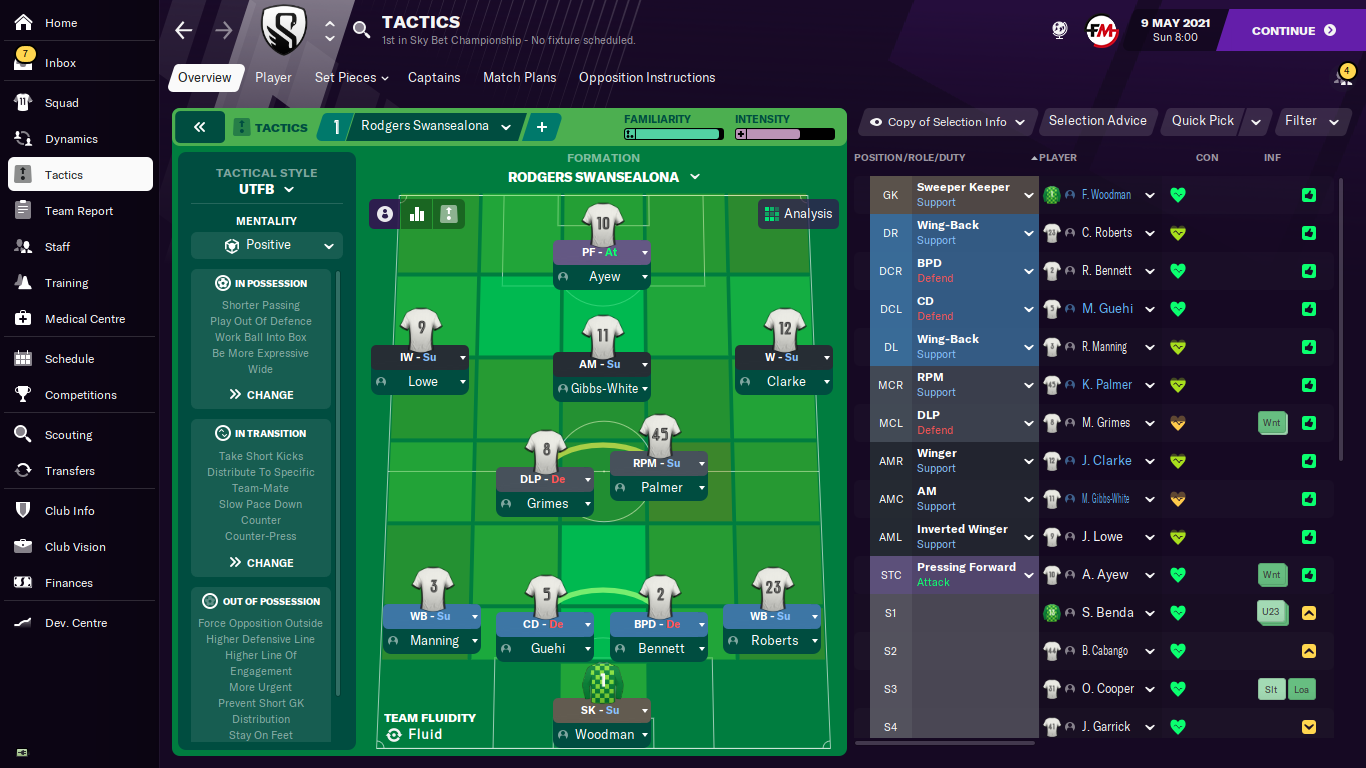


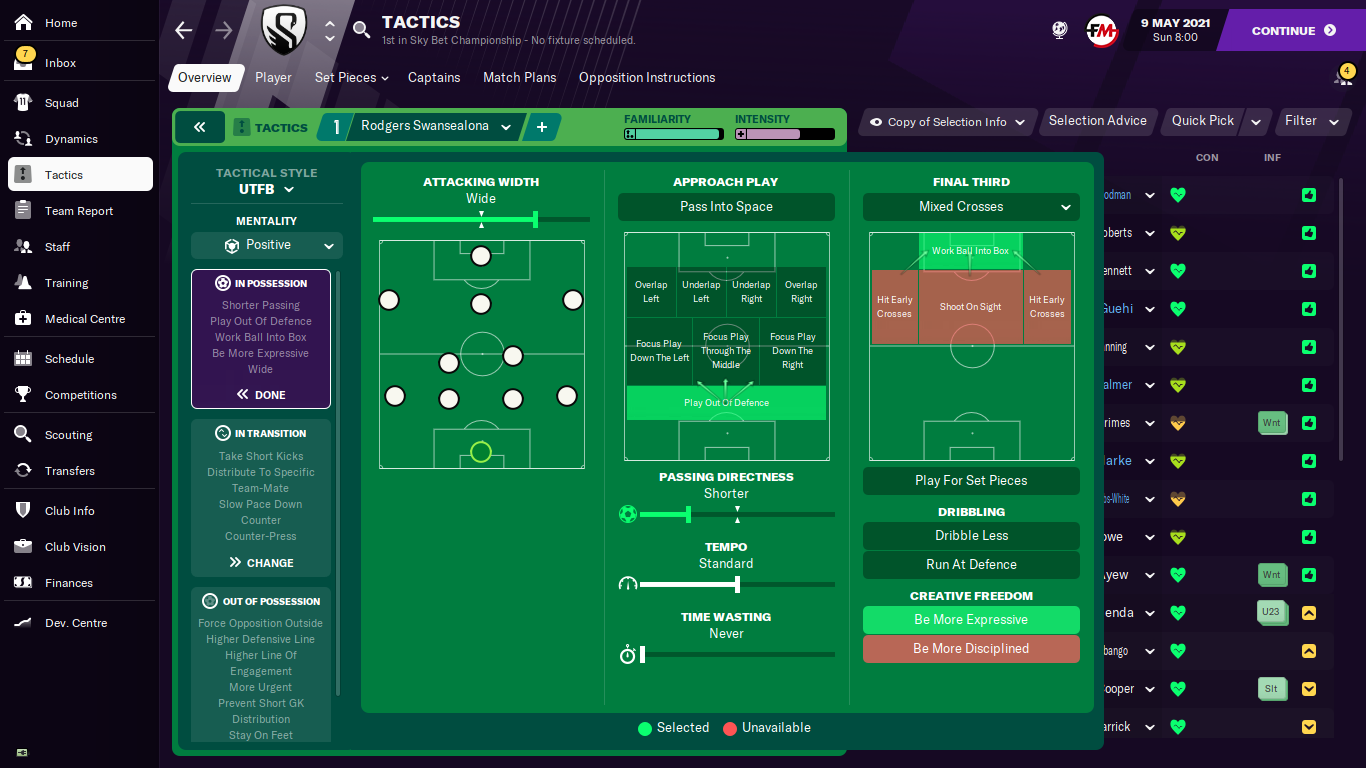


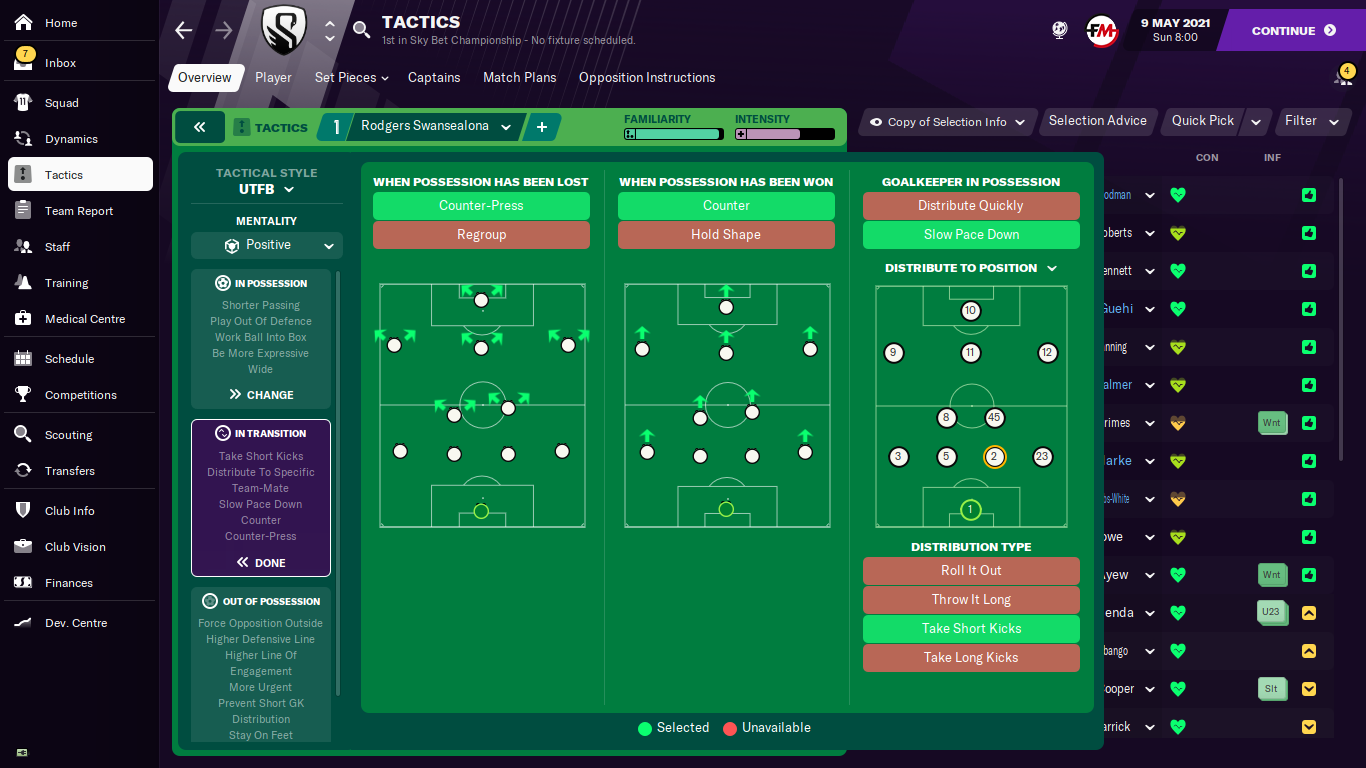
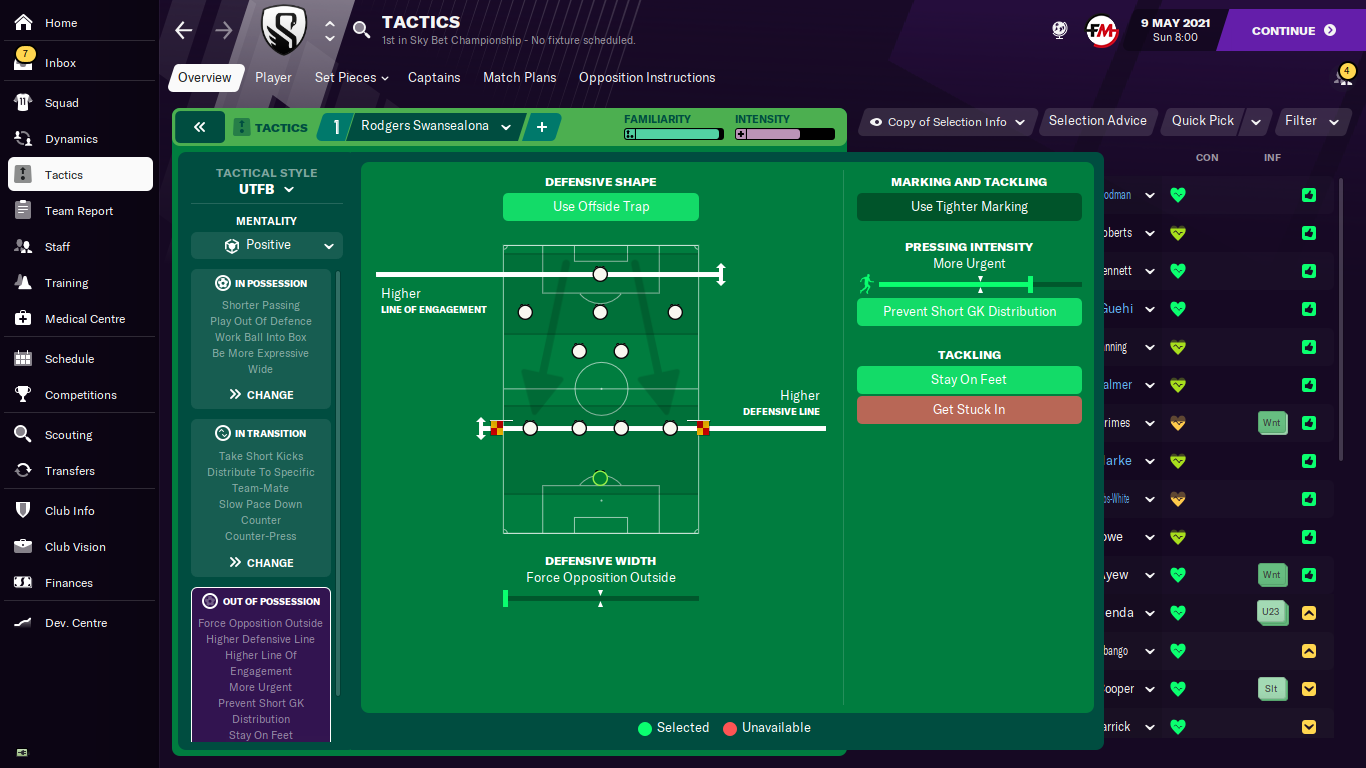
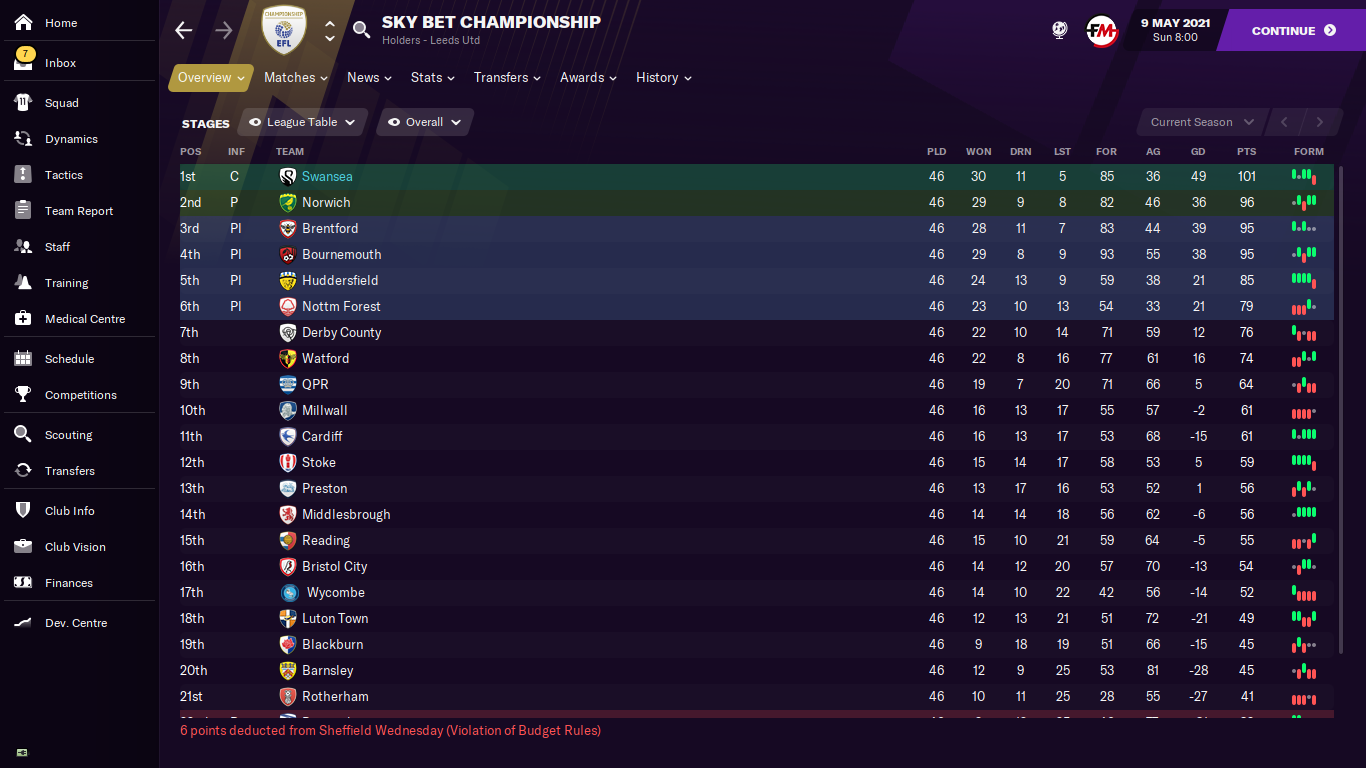

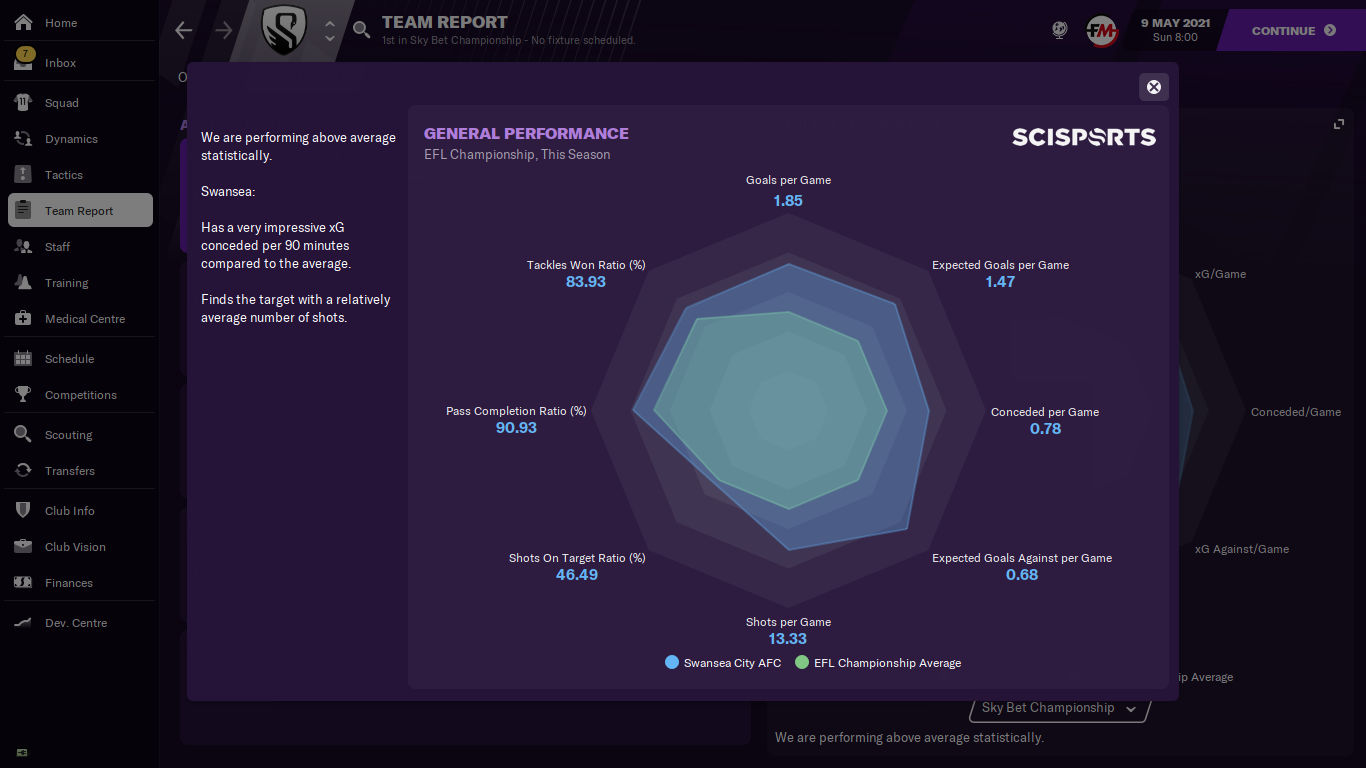


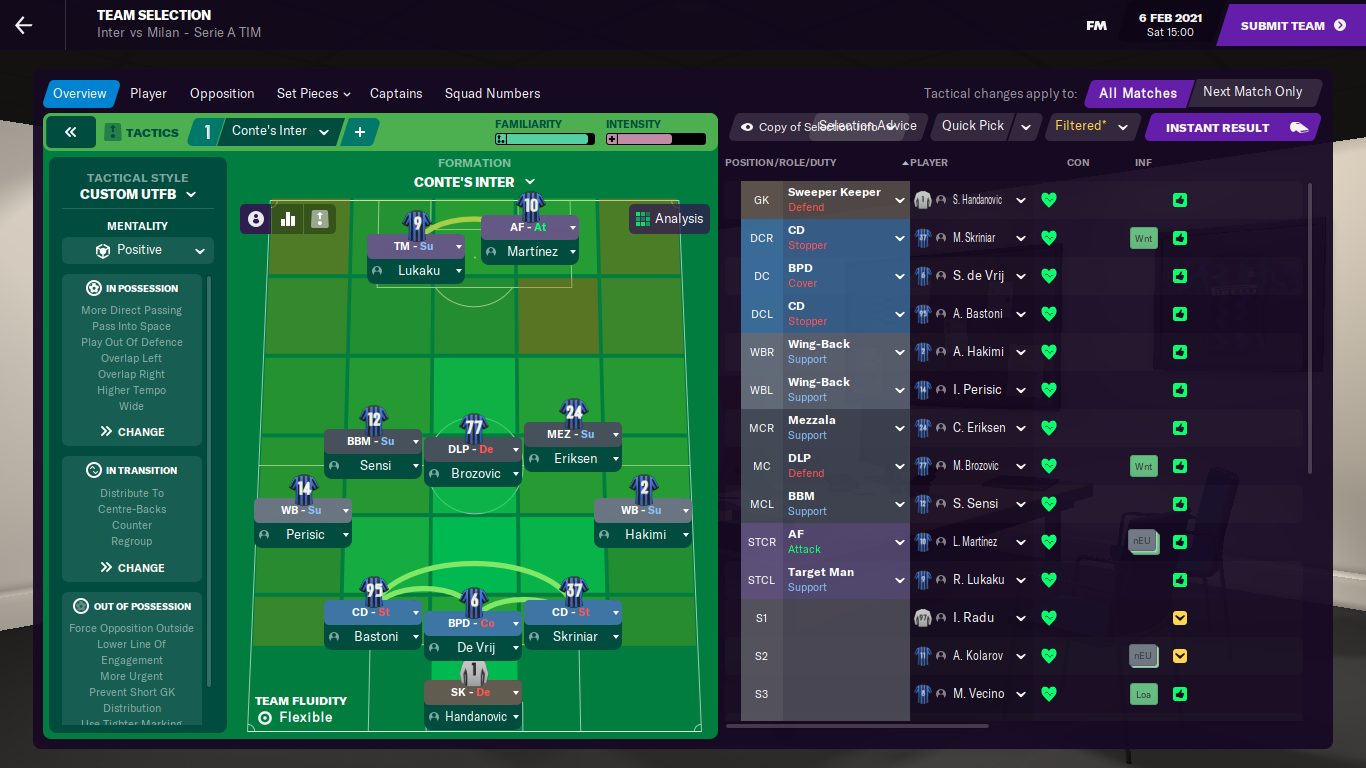



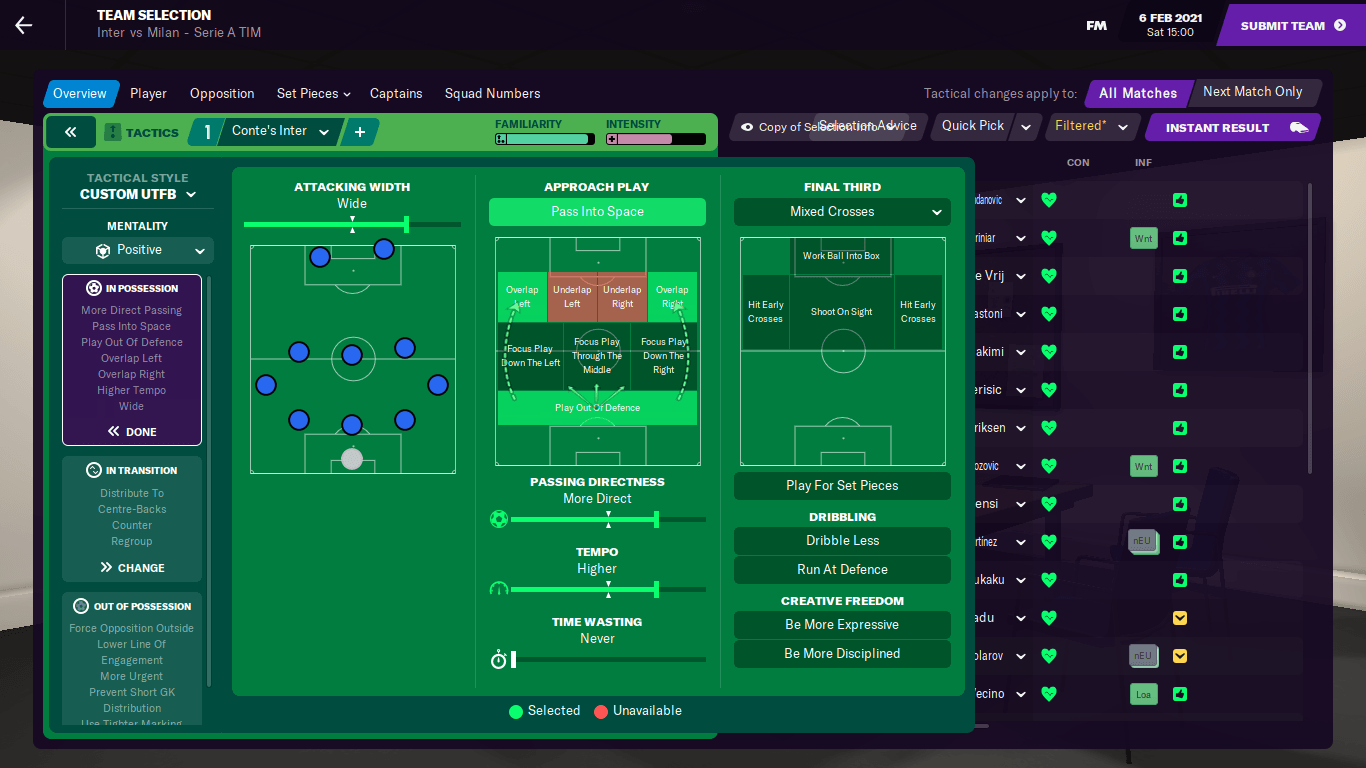

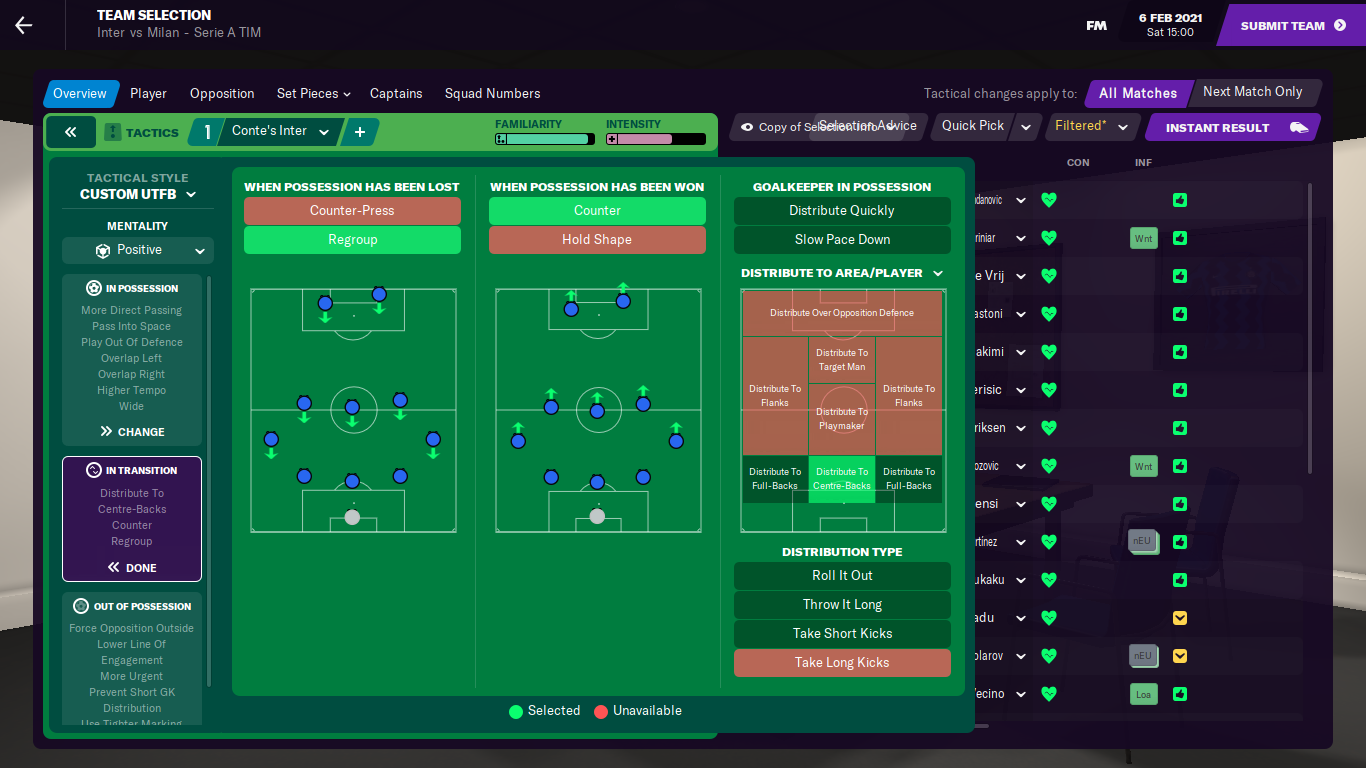


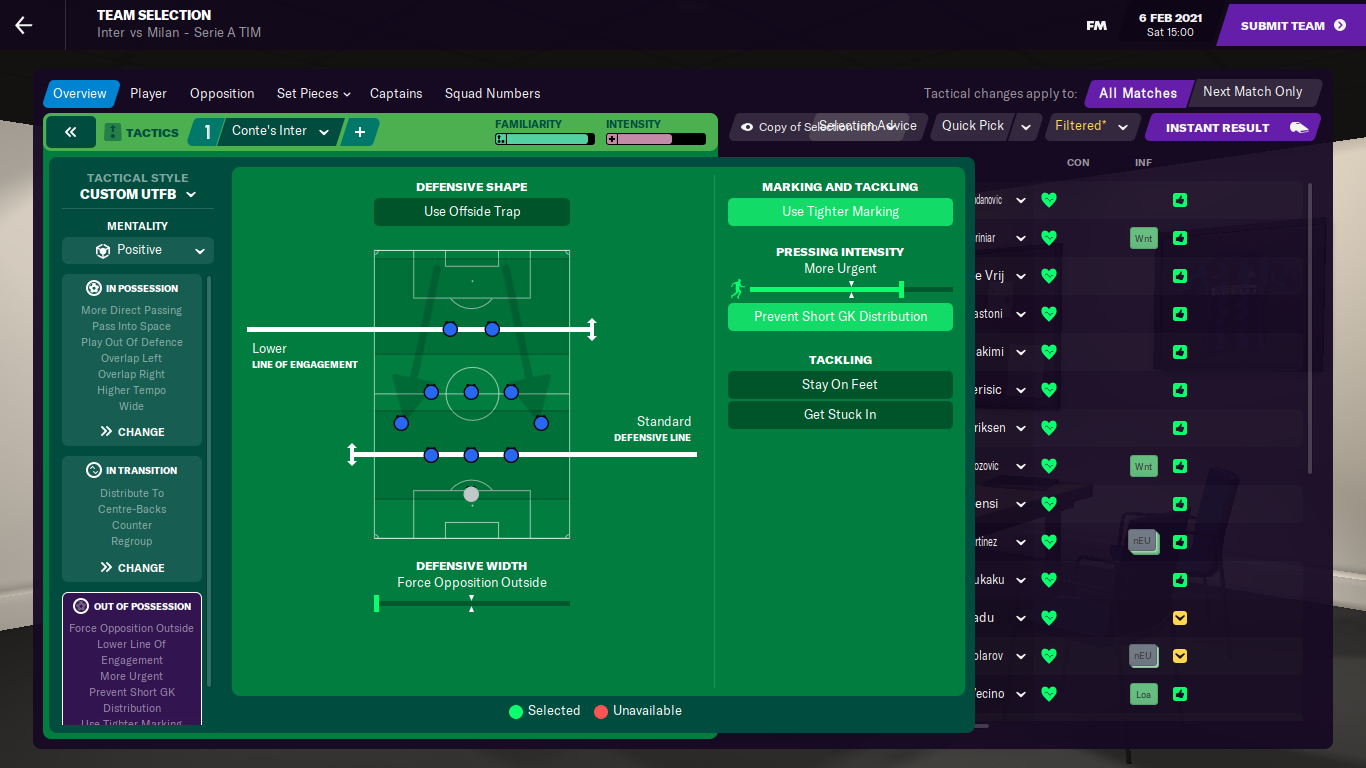
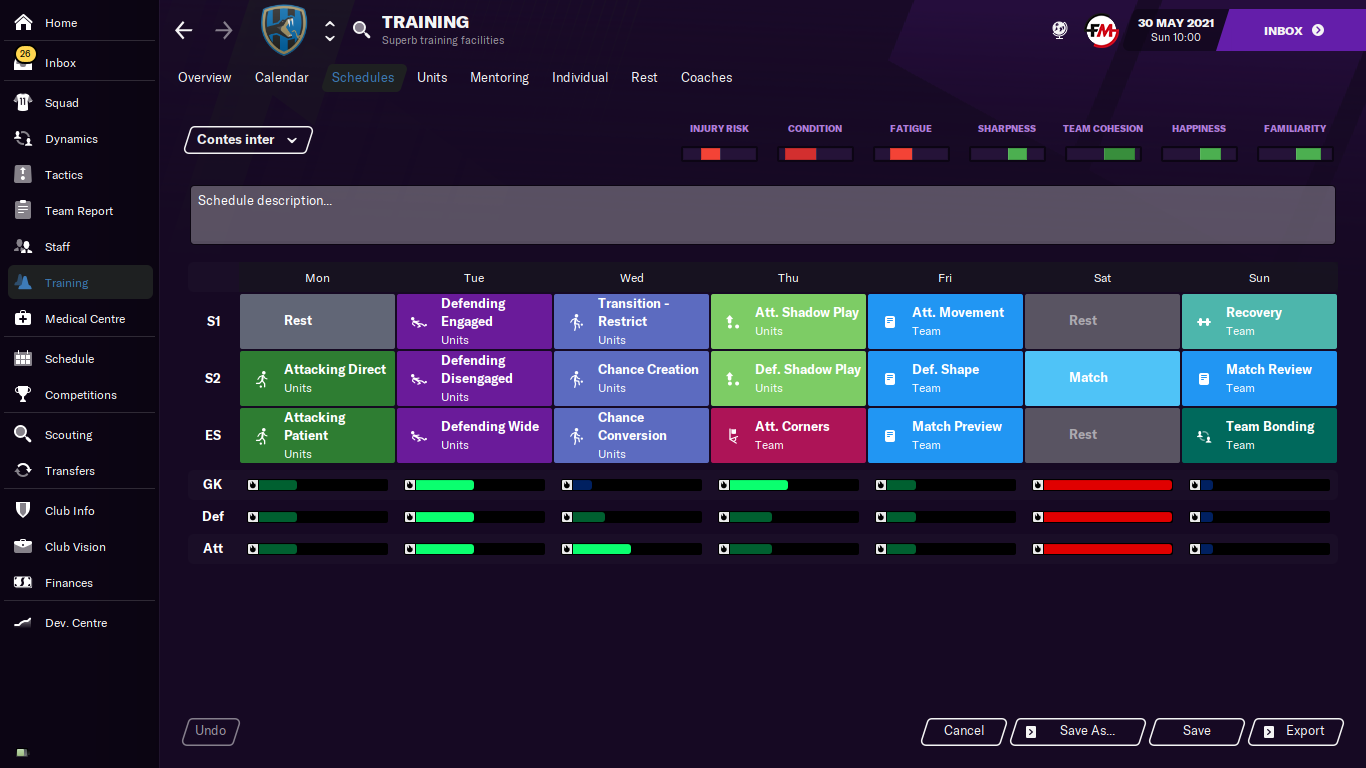

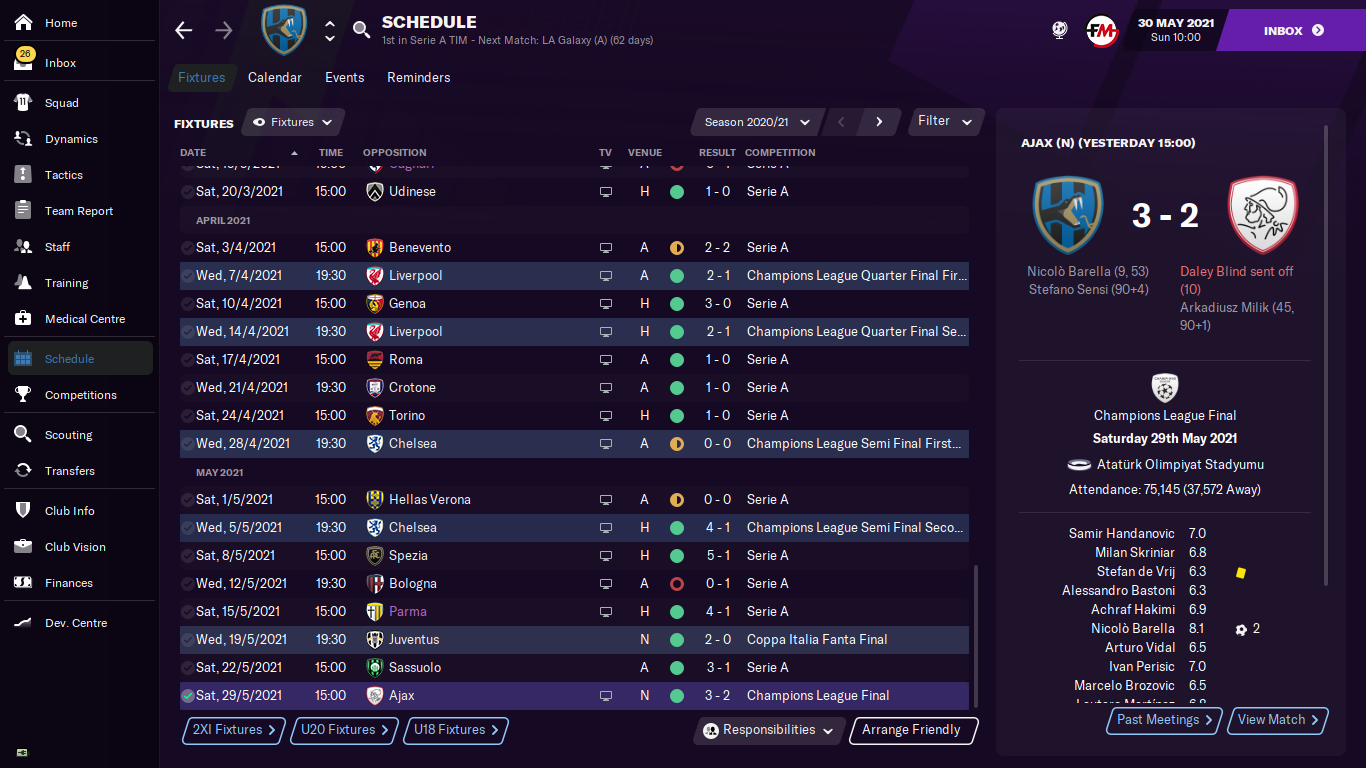


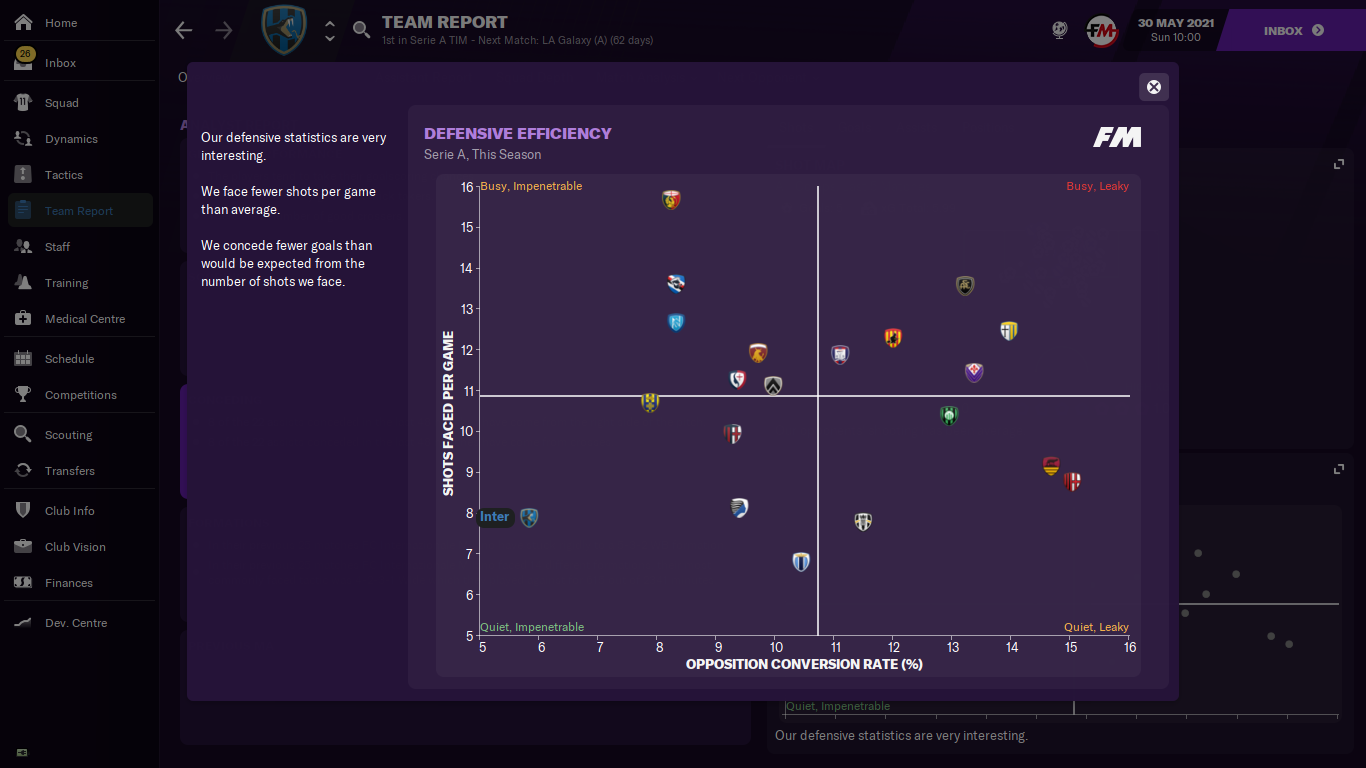
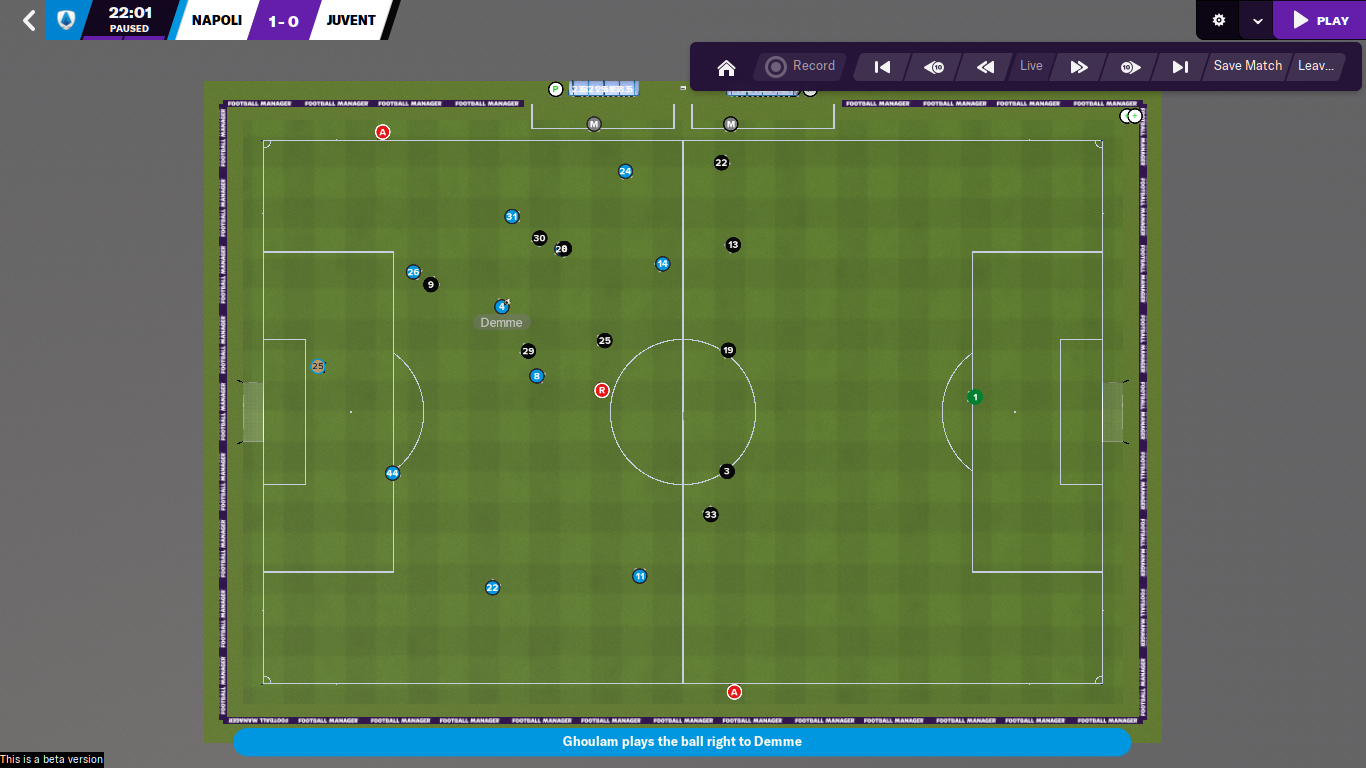





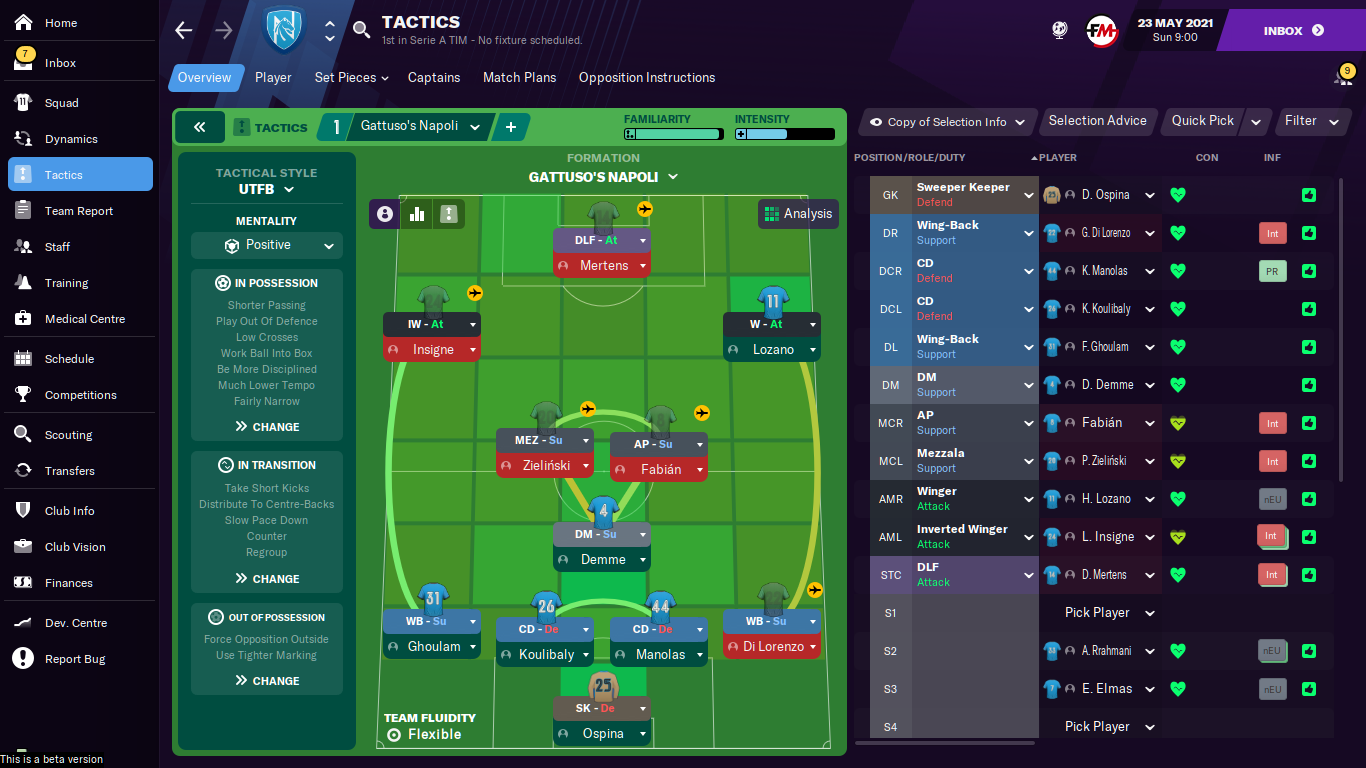
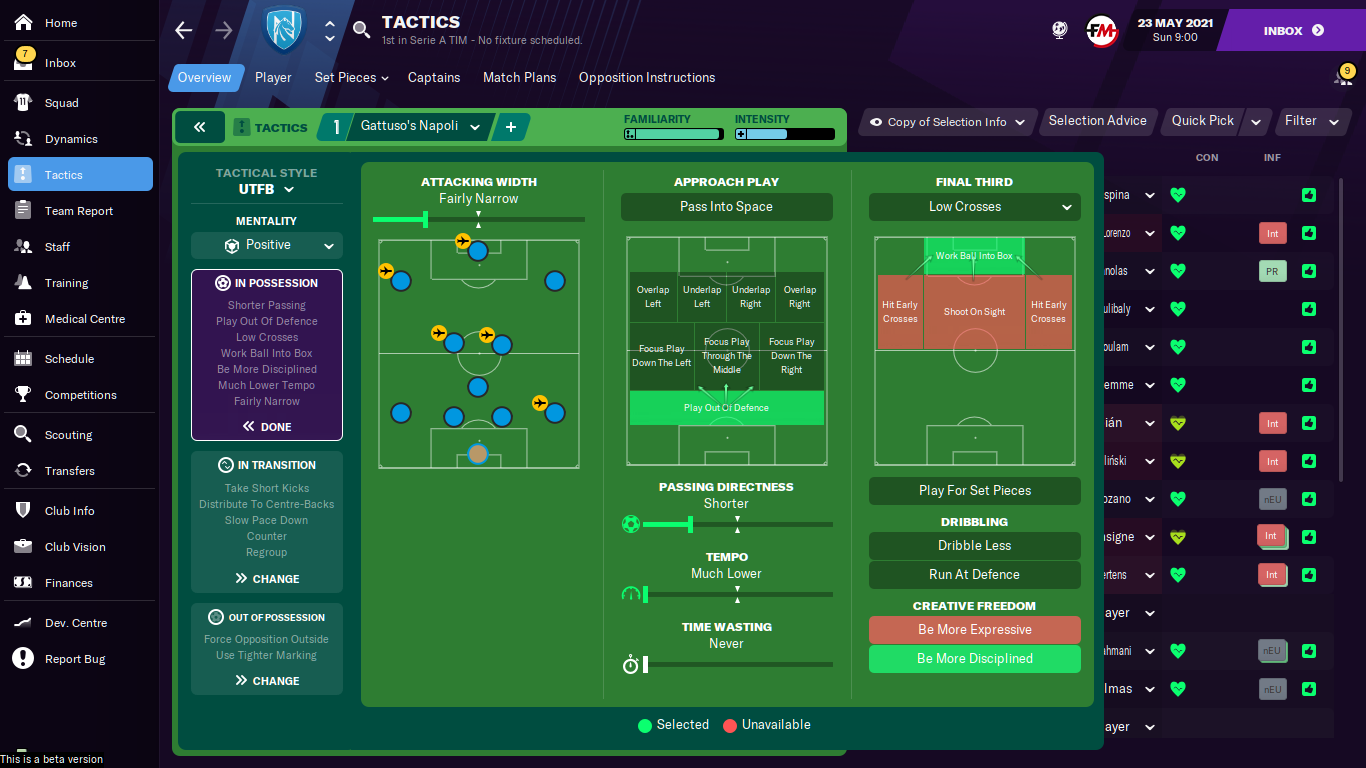


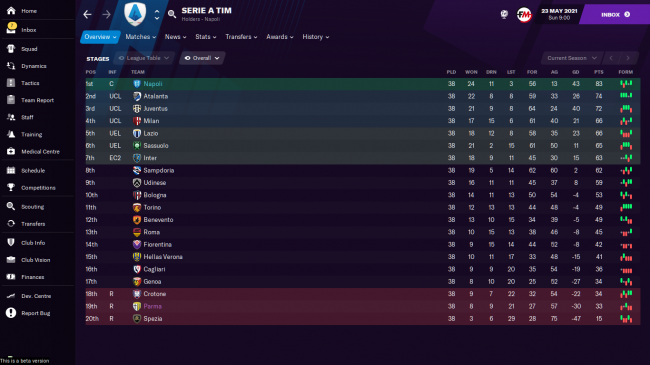
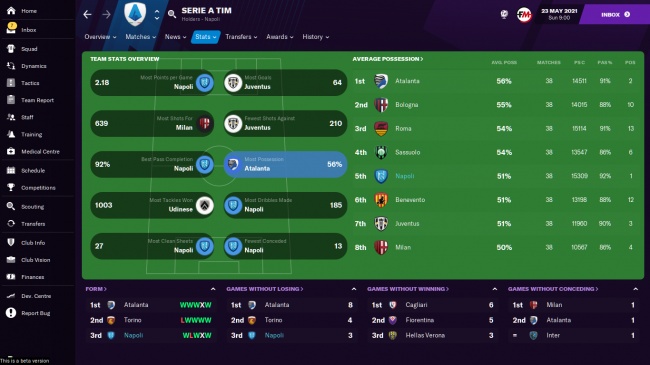


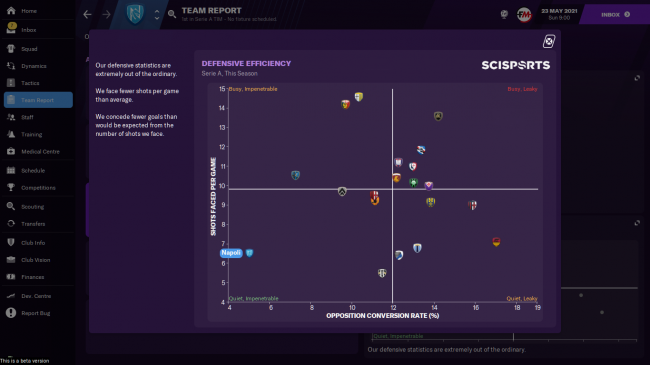
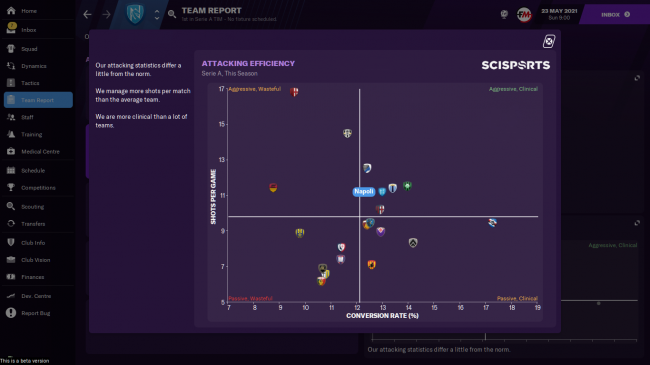
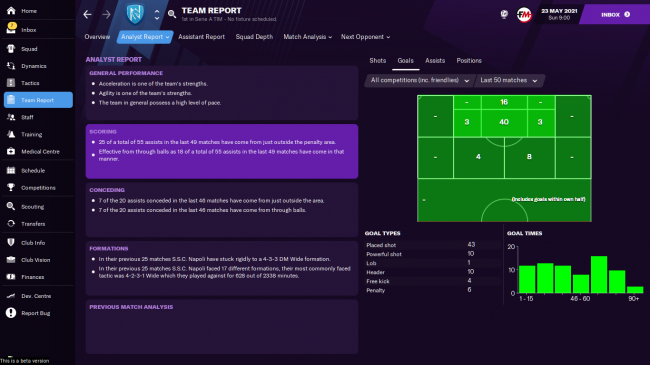

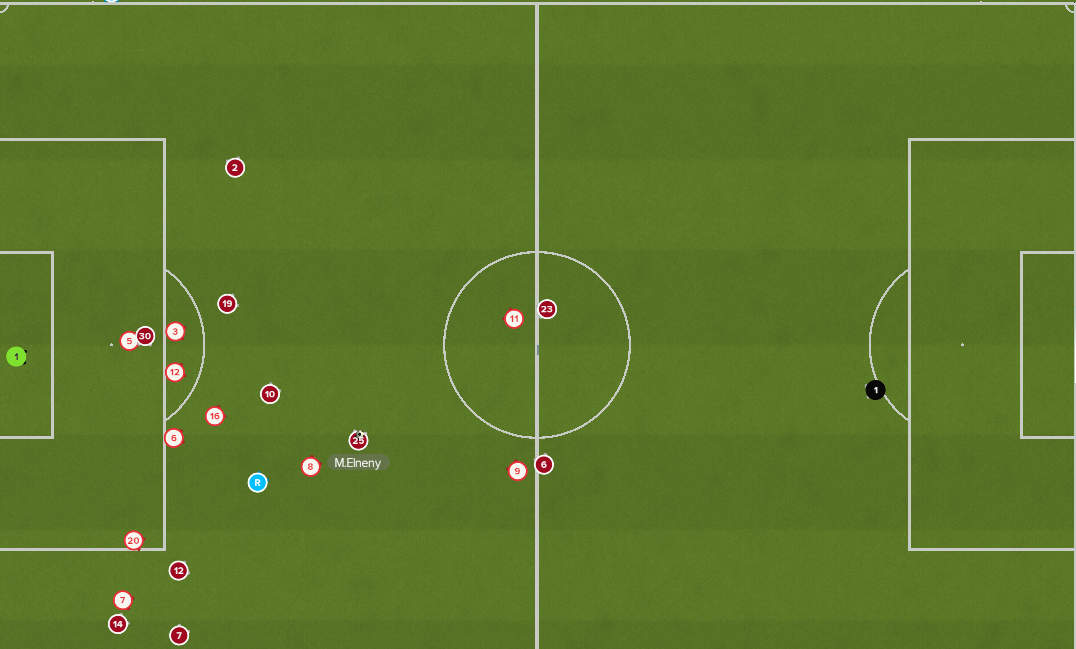

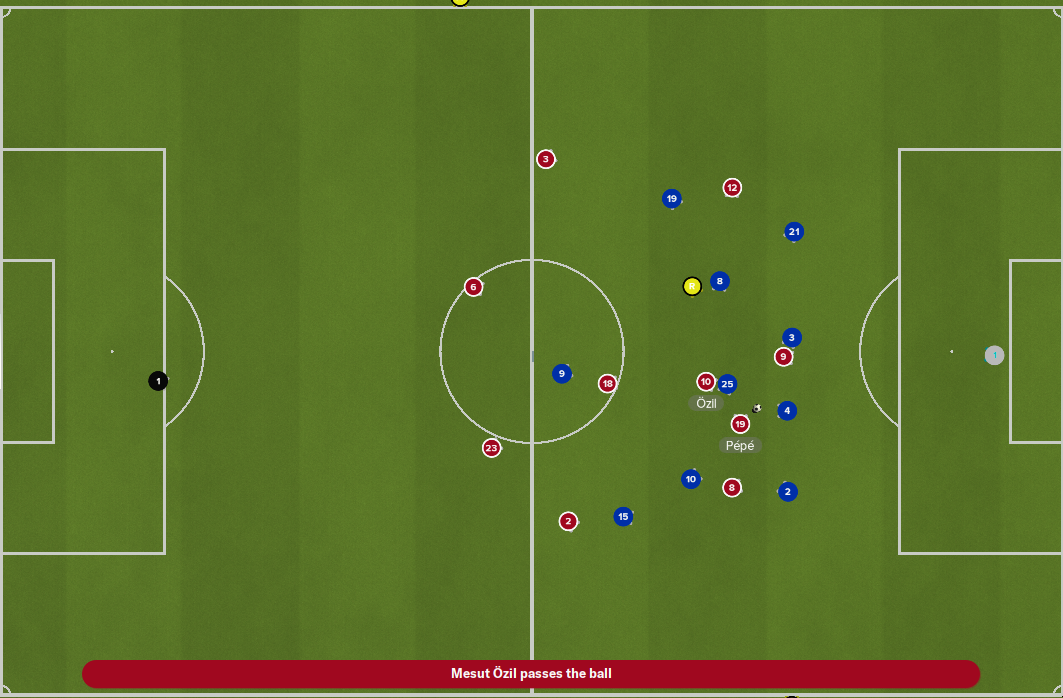
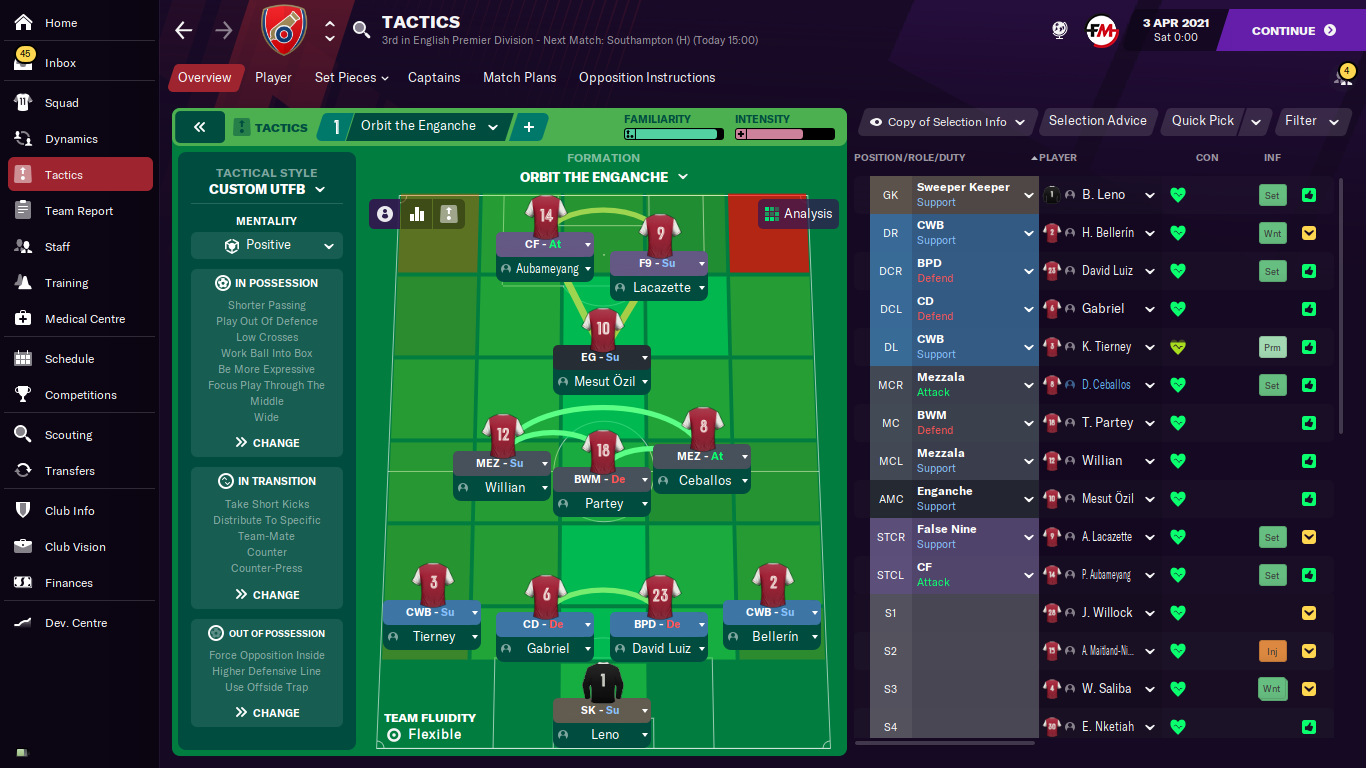
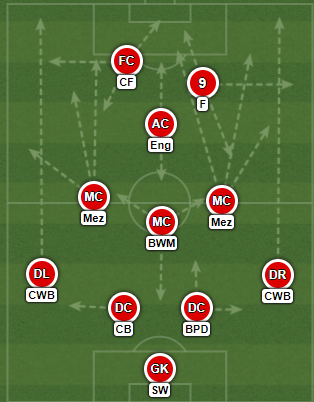
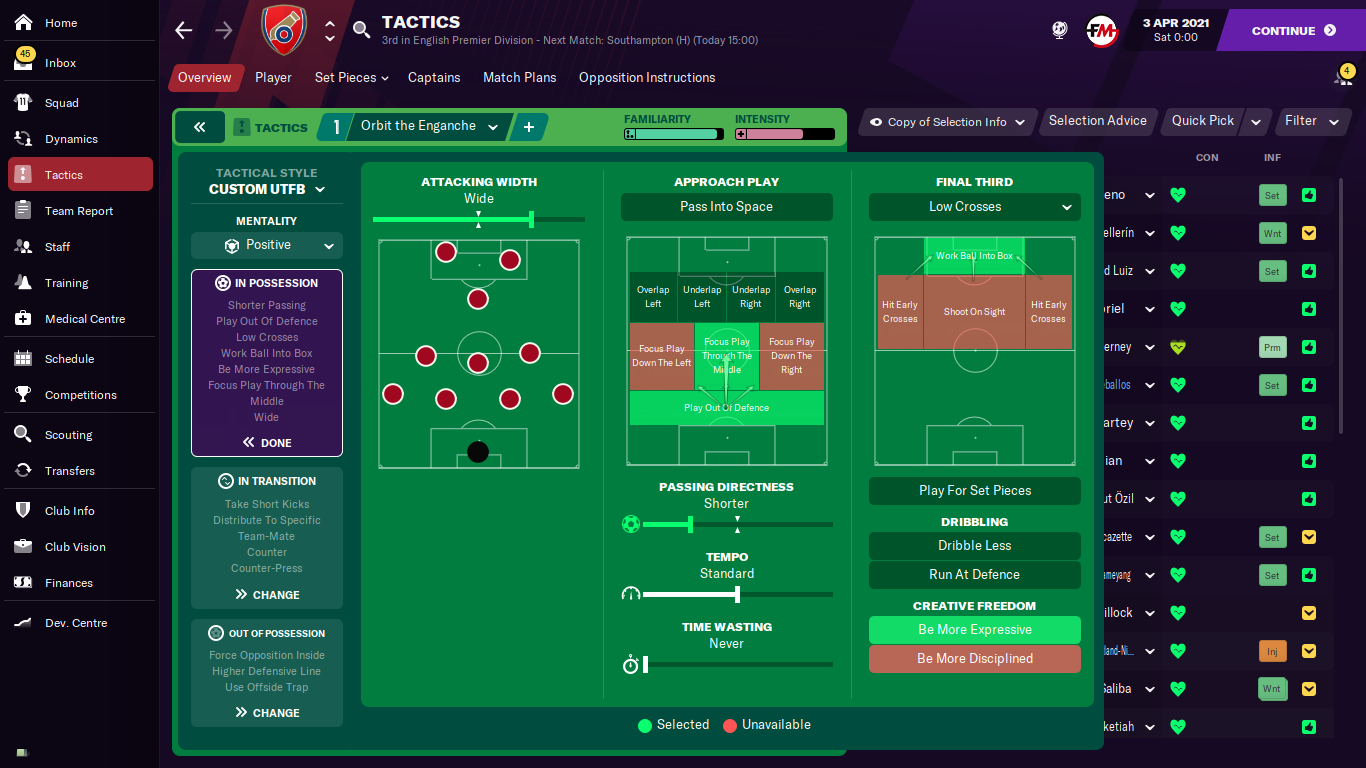

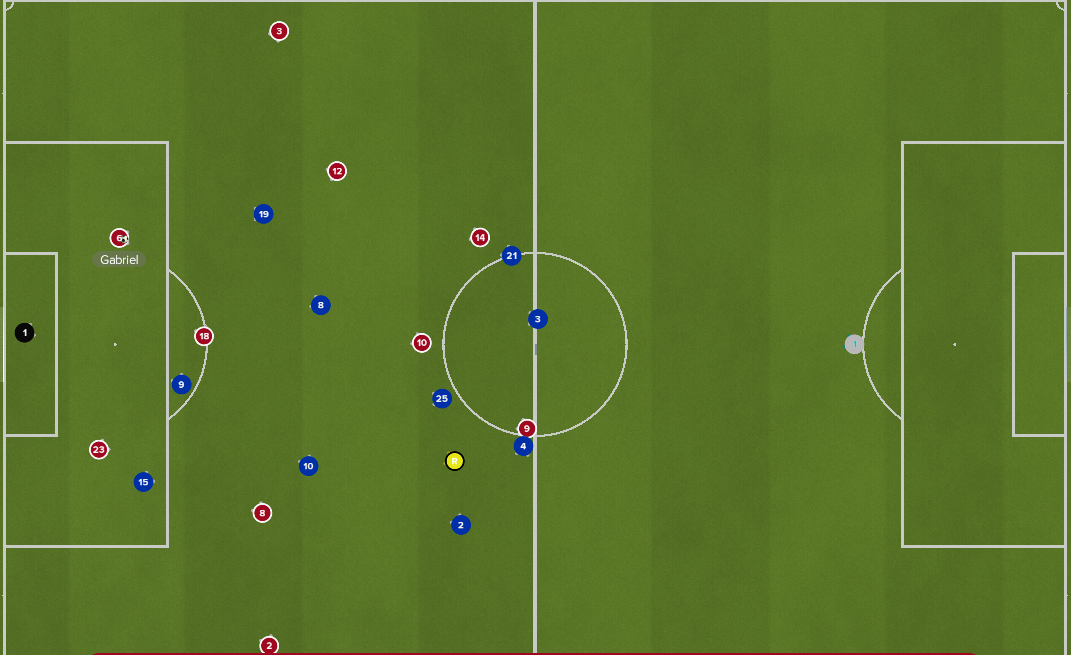

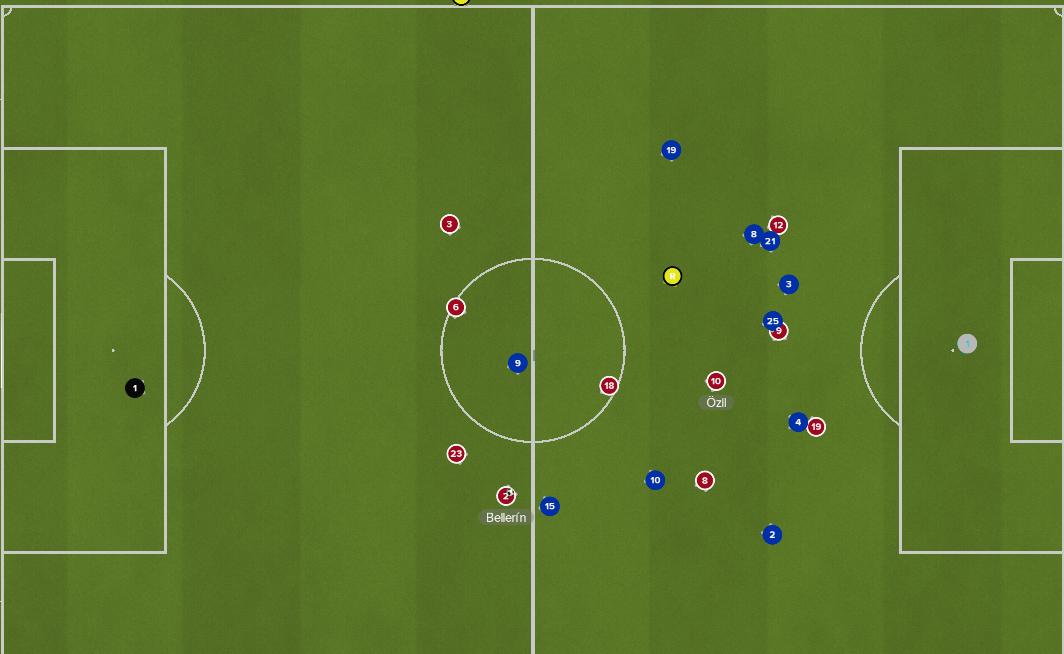
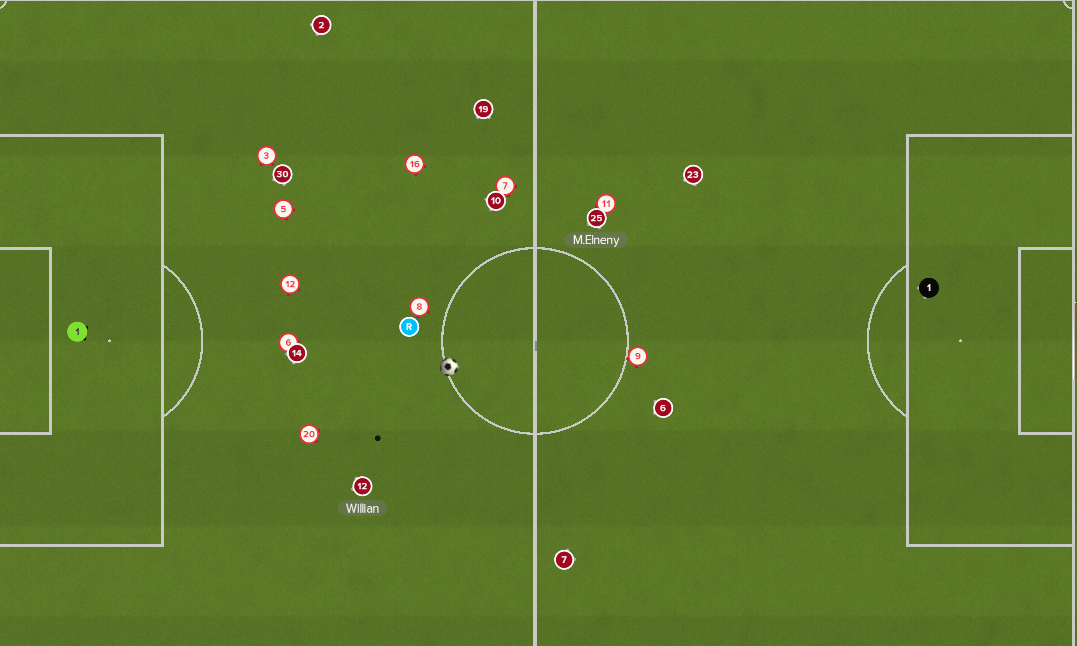
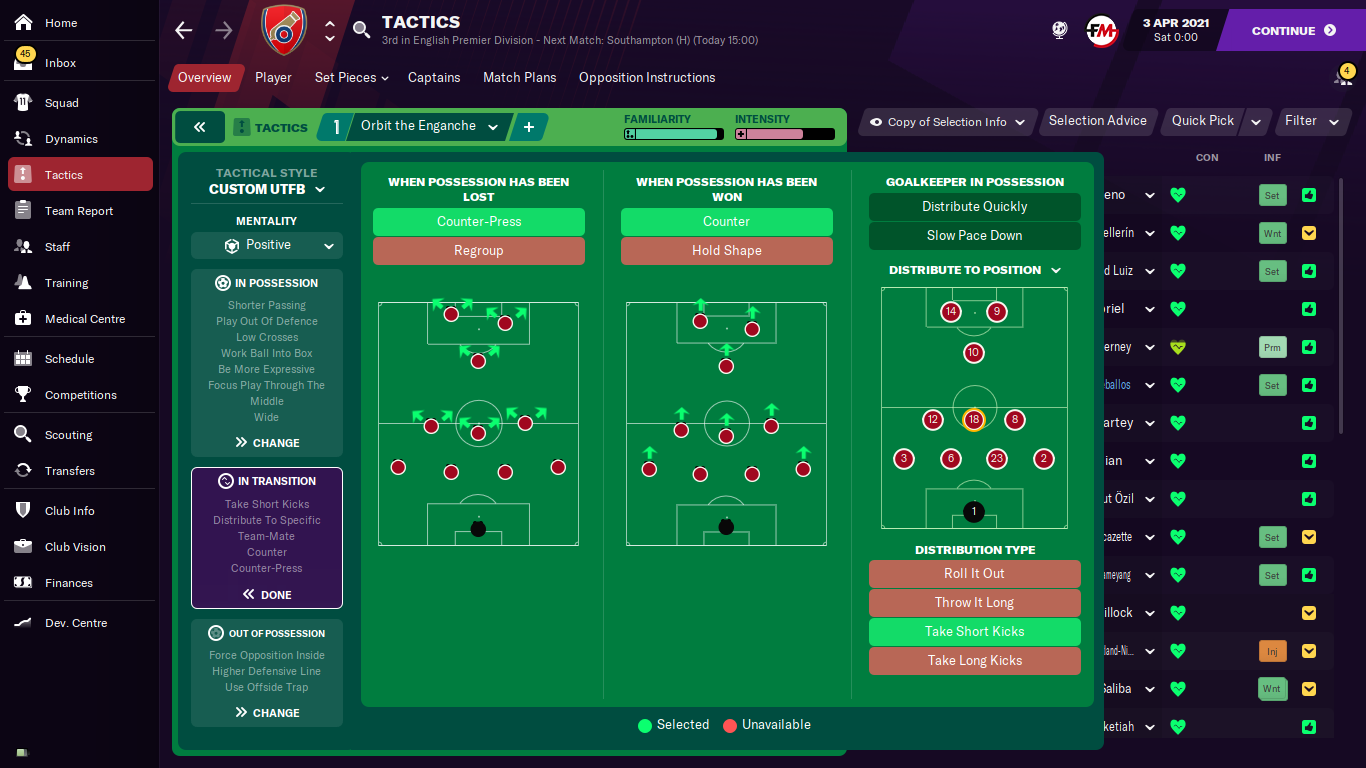


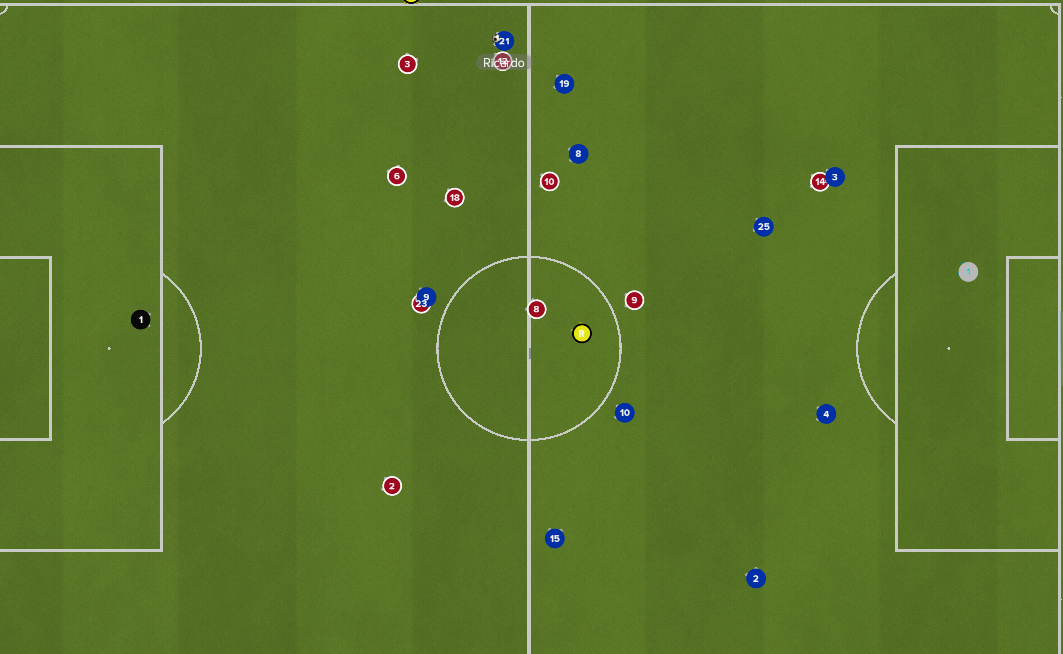

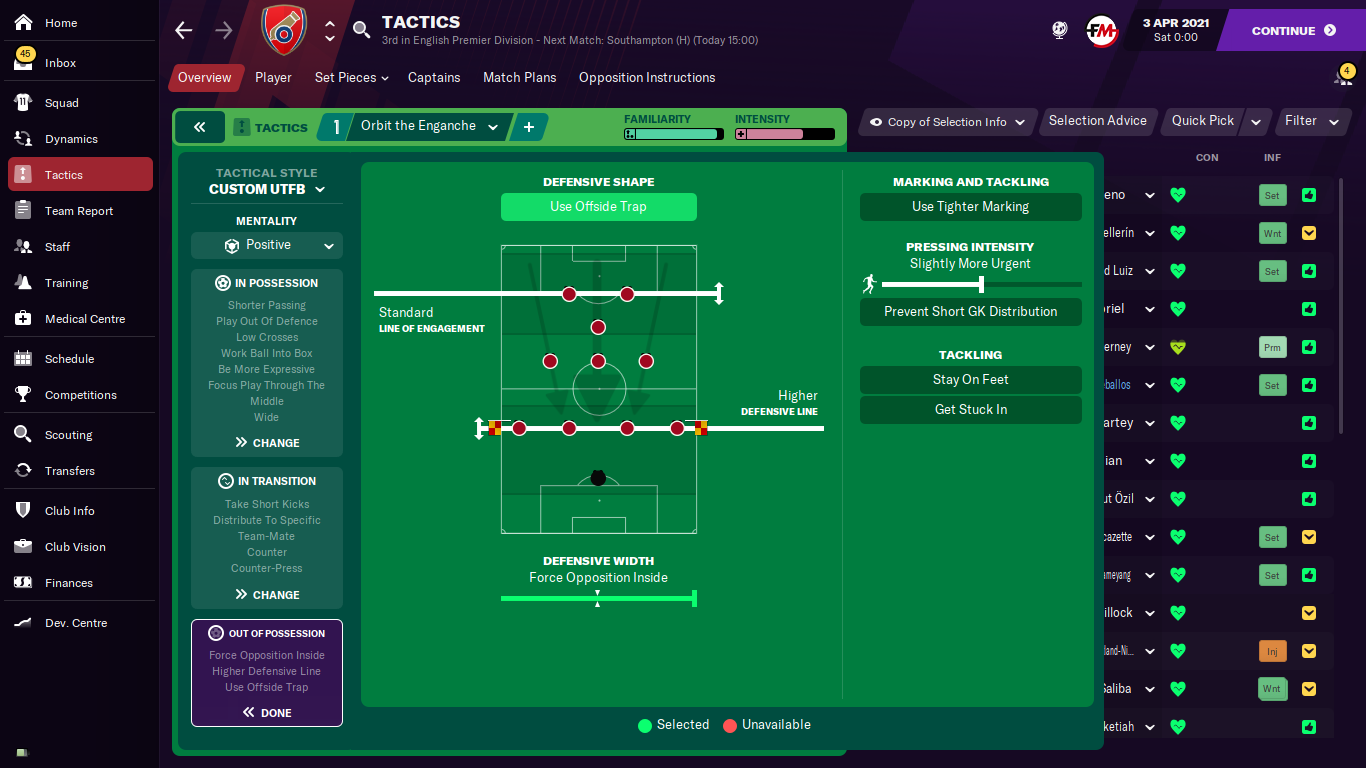
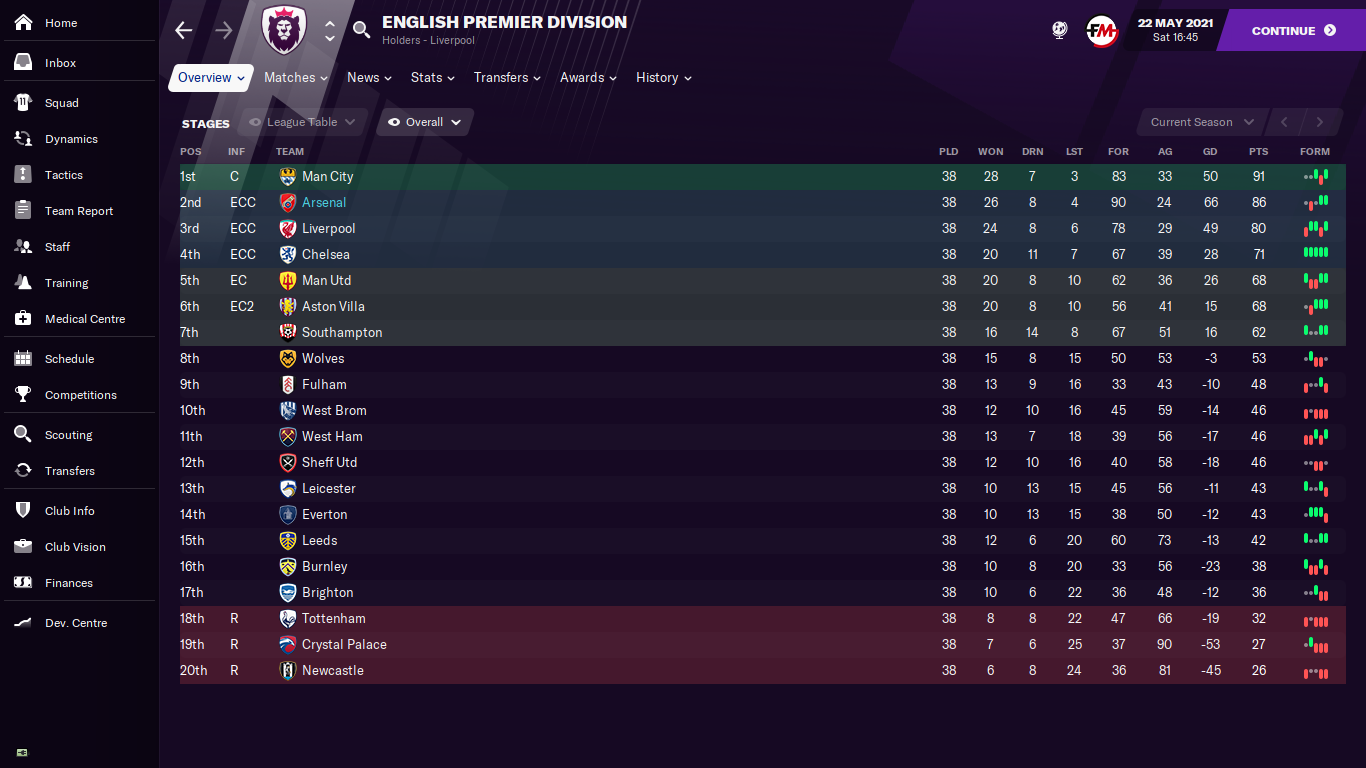
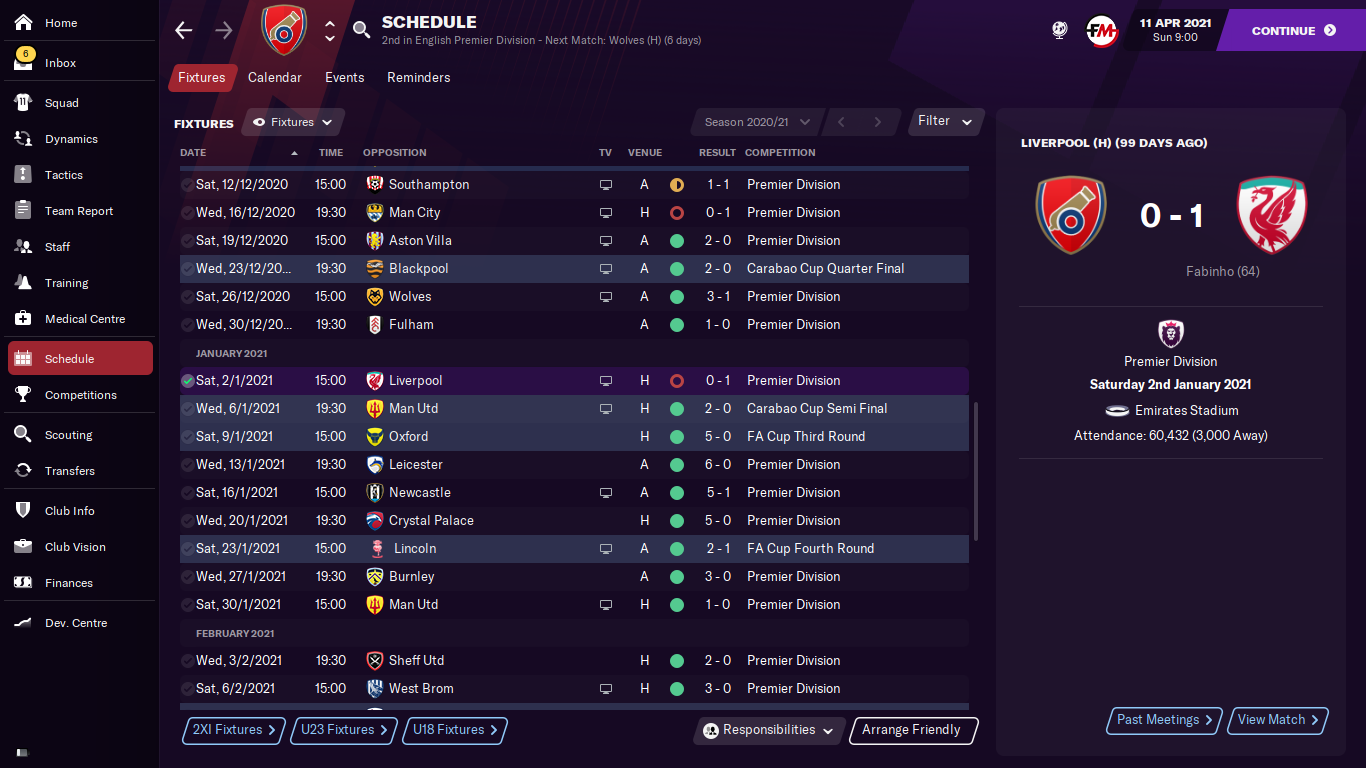
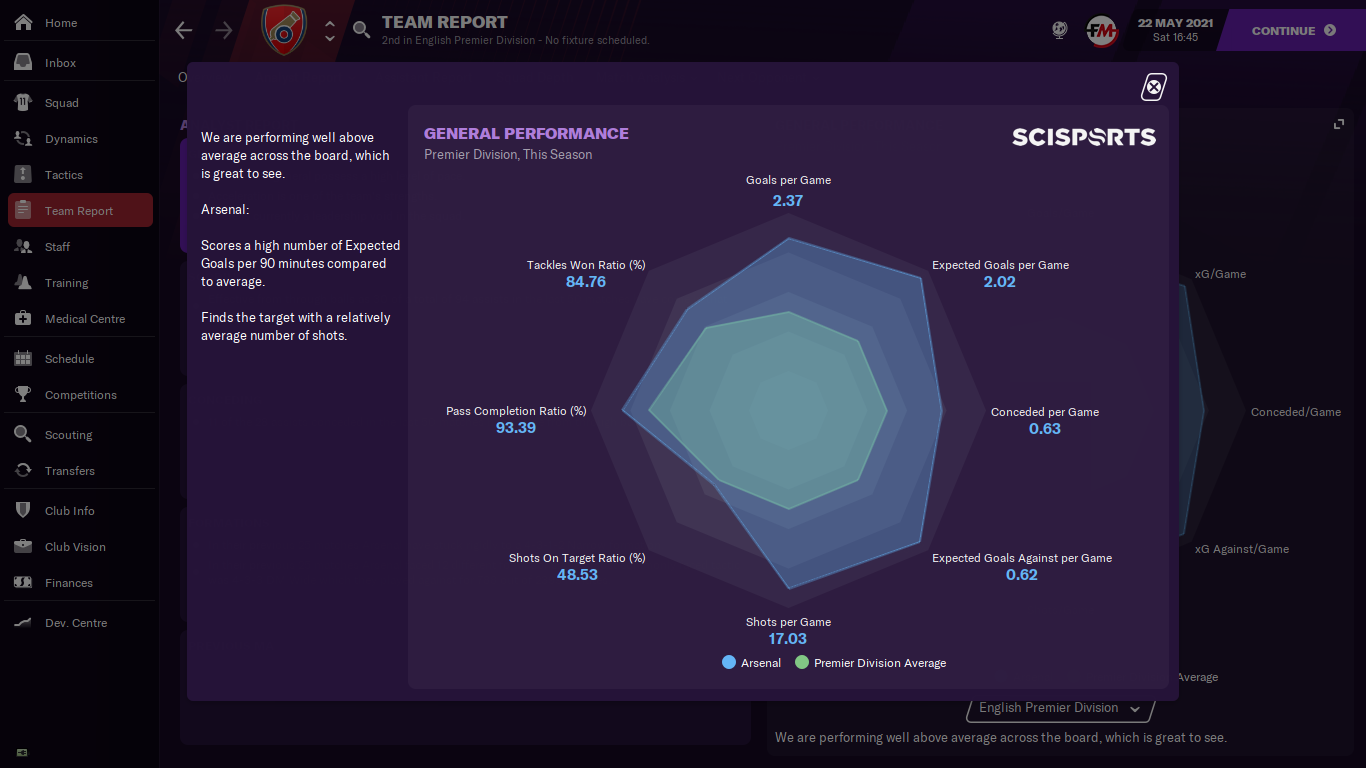
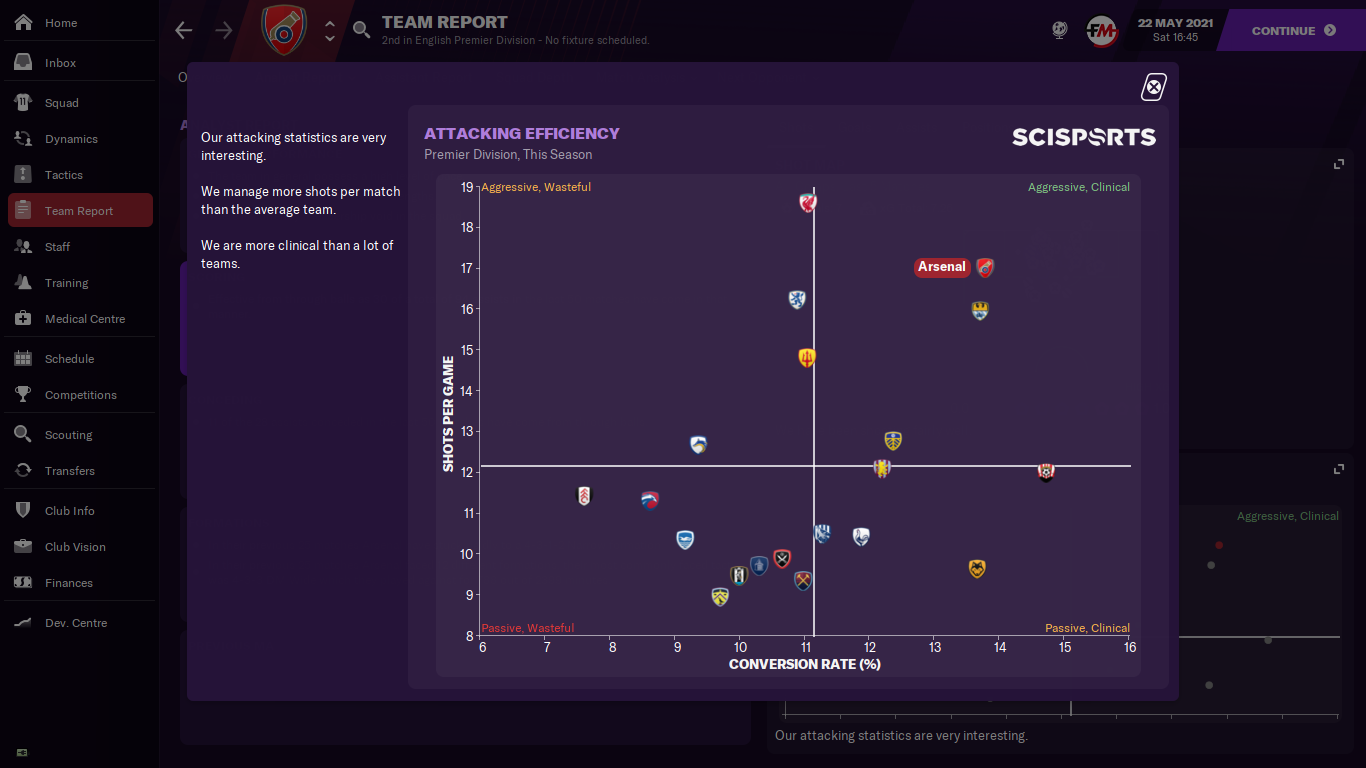
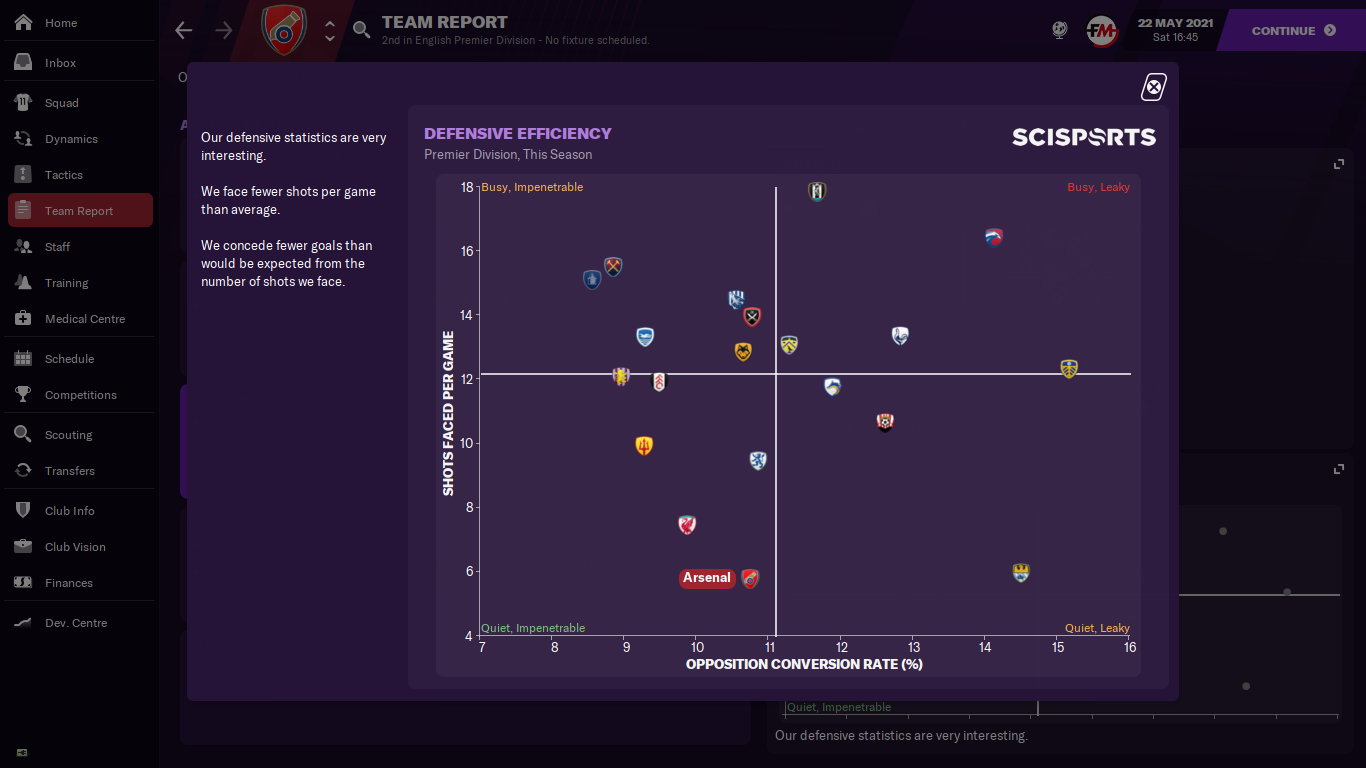
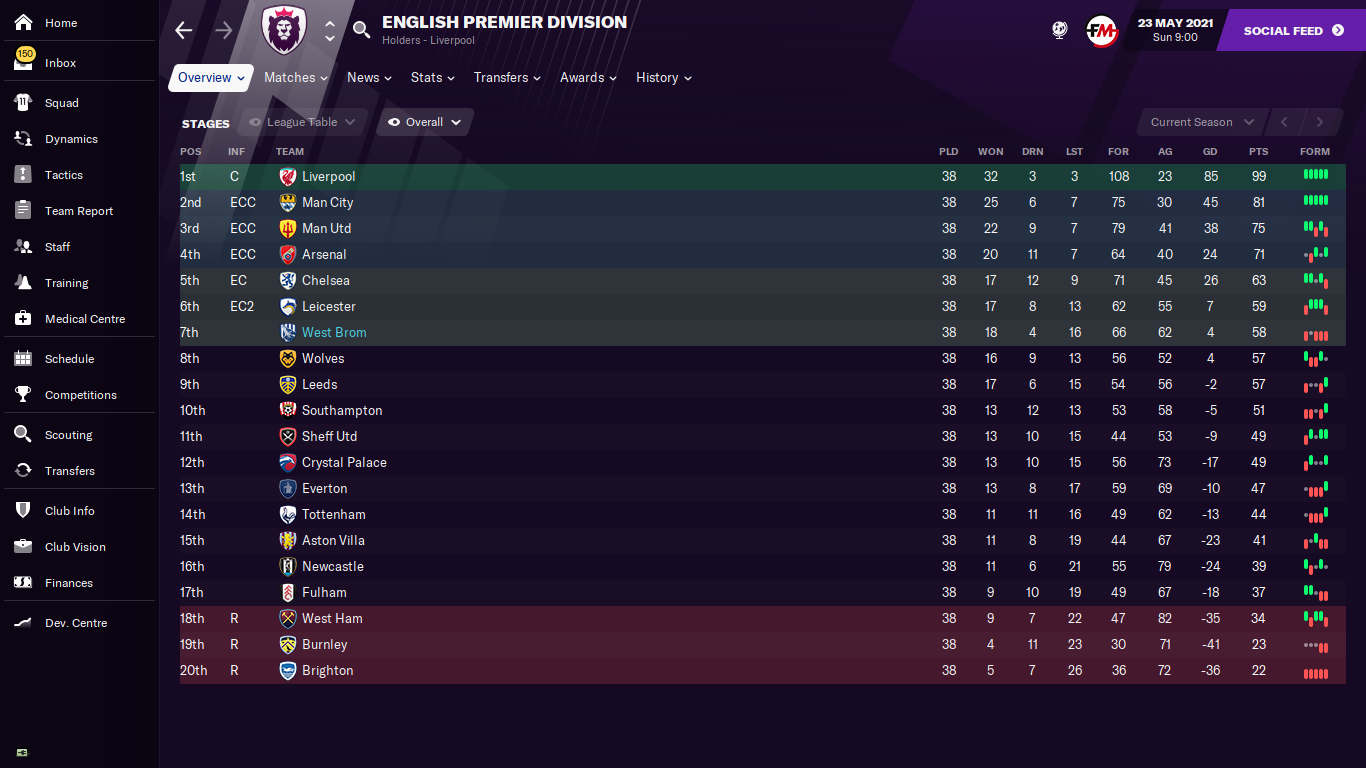
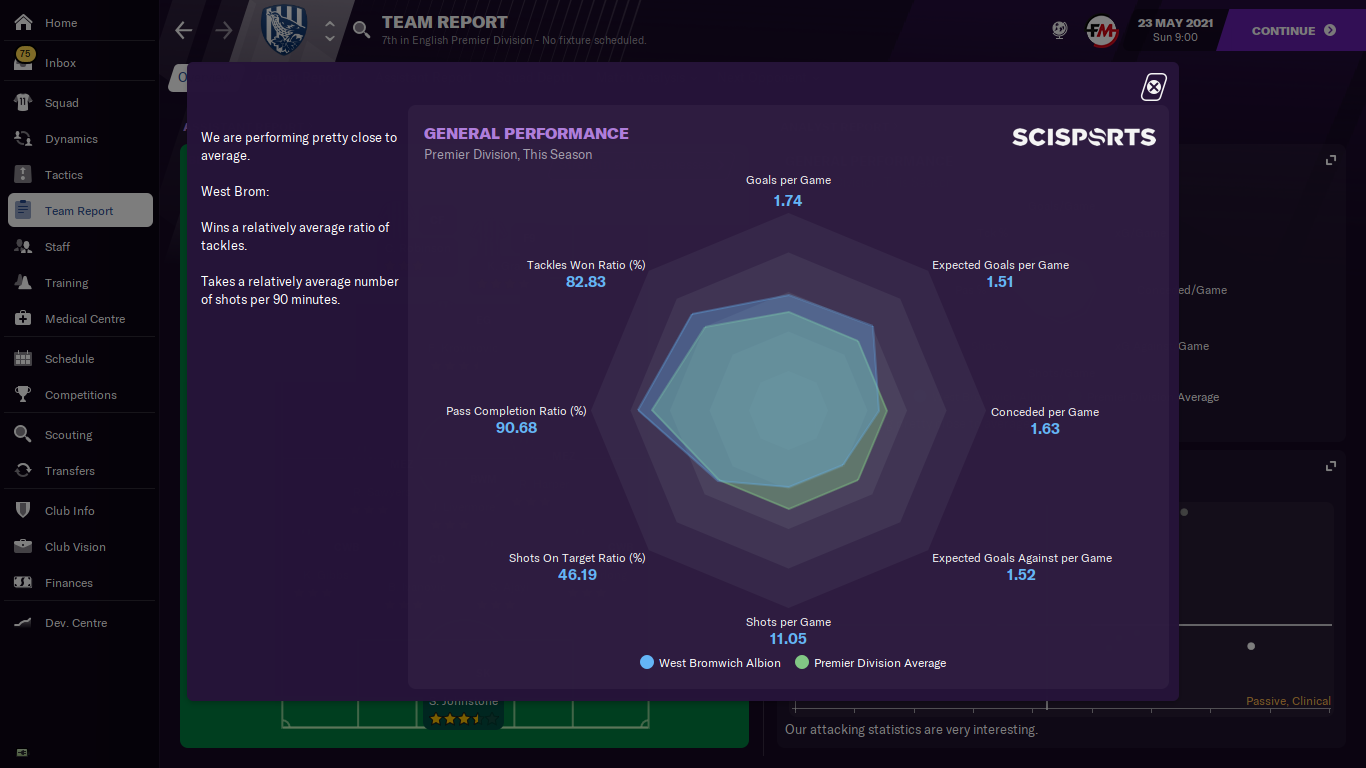
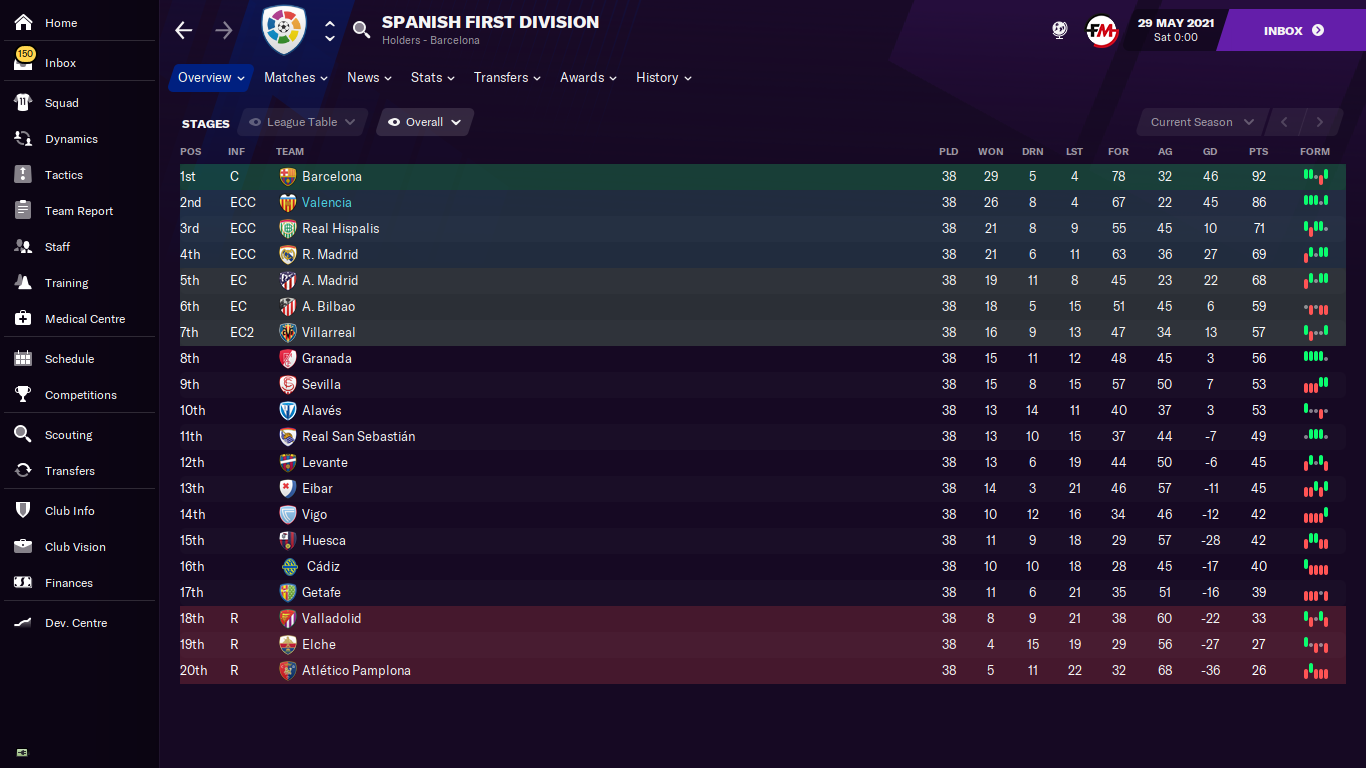
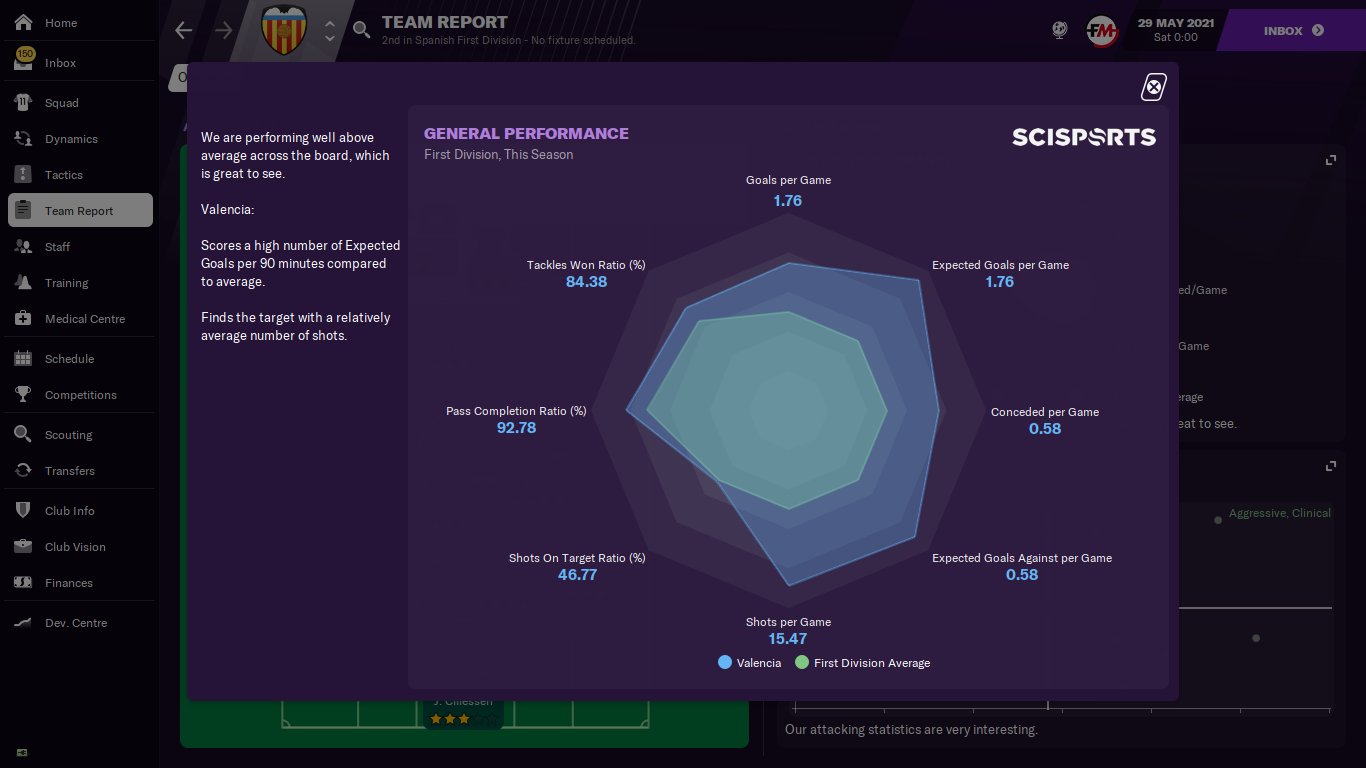
Sarriball
in Tactics Sharing Centre (Upload/Download)
Posted
Background
Maurizio Sarri did not play professional football; instead, he worked as a banker while playing and coaching amateur football. Sarri coached many teams in the lower leagues of Italian football, and it wasn't until 2005 he manged in the Seria B for the first time with Pescara.
Sarri then bounced around clubs again until he took the Empoli job in 2012, this was his breakthrough job In his three seasons Empoli finished 4th losing in the playoffs before achieving promotion with a 2nd place finish. In his final season, Empoli finished 15h after six years away from the top flight ensuring they would maintain their place in Seria A the following season.
Sarri moved to Napoli the next season, and this is where his reputation rose, as Napoli finished 2nd and 3rd twice, in his final season before moving to Chelsea Napoli ran Juventus all the way and eventually finished 4 points behind the old lady.
Sarri's style of play
Sarri is considered an intelligent coach taking a meticulous approach when preparing for matches paying particular attention to set-pieces, often having his players practice many different plays for the same set-piece.
One of the main trademarks of his highly organised system is a four-person back-line. His teams usually play a high defensive line and adopt the offside trap and a zonal marking system.
Sarri requires his defensive players to be synchronised in their movements, anticipates plays, and look at the ball as a point of reference, not their opponents.
Essentially, Sarriball is a method of high-pressing play (though not to be confused with Jurgen Klopp's gegenpressing) that forces defenders into making mistakes, which are then punished by the counter-attack.
The other vital components to a Sarri system are the use of a deep-lying playmaker who dictates the play most famously Jorginho for Napoli and Chelsea. Sarri also needs overlapping wingbacks to provide the width to his linear system.
On the ball
Sarri's teams are known for playing an attractive, exciting, and attacking-minded brand of football, based on retaining possession, movement off the ball, and many quick, short passes on the ground; This style has come to be known as "Sarri-ball" or "liquid football".
The essence of Sarri-ball is a brand of possession football where ball retention is critical, but not just for the sake of it. Sarriball relies on quick interchanges to move the ball up the field, making it a form of vertical tika taka. Players use their individual quality to make things happen in the final third of the pitch.
Sarri mostly prefers attacking through the left, a flank stacked with attacking prowess, and his players need particular tactical identities to be a success in his system. Sarri wants his teams to build from the back and success depends heavily on his defenders holding possession to begin the first instance of attacking threat.
Sarri's defenders are the first instigators of the attack – as seen through his use of defender Kalidou Koulibaly whose passing and ball control was integral to the Italian side's push for the title. Sarri instructs his defenders to play quick triangular passing combinations to beat the initial press and draw the opponents midfield out of position.
Sarri's Napoli's modern, innovative, and creative playing style, as well as their mentality, ability to move up the pitch quickly on counter-attacks and score many goals, won praise from several pundits, players, and managers, including Pep Guardiola and Cesc Fàbregas.
In 2018, former manager Arrigo Sacchi praised the style employed by Sarri's Napoli side as "the most important thing seen in Italy in the last 20 years.
Tactic
Check the video below for a full tactical overview and analysis.
Sarriball.fmf